France is home to a wide variety of birds, from large raptors to small passerines. With more than 350 bird species, France offers birders a wonderful opportunity to observe a diversity of species in their natural habitats.
From the Pyrenees to the coastline, France’s habitats offer a variety of terrain and climate, allowing for a wide range of birds. Whether you’re a beginner or a seasoned birder, France is a great place to spot birds.
1. Common Blackbird

The Common Blackbird is a species of true thrush with the scientific name Turdus merula. Found in Europe, Asiatic Russia and North Africa it has also been introduced to Australia and New Zealand.
The male bird has glossy black plumage while the female’s coloration is more brownish gray.
It is known for its melodious song that can be heard throughout much of the year; typically they are seen alone or in pairs but occasionally form large flocks when food sources become available or during migration periods.
Its diet consists mainly of insects, worms, berries, and other fruits as well as some human-provided foods such as bread crumbs or garbage scraps when available.
With its wide distribution range along with ease of adaptation to different habitats, this species will likely remain one of the most common birds around us.
Scientific classification:
| Kingdom | Animalia |
| Phylum | Chordata |
| Class | Aves |
| Order | Passeriformes |
| Family | Turdidae |
| Genus | Turdus |
| Species | T. merula |
2. Common Starling

The Common Starling is a medium-sized passerine bird that belongs to the starling family. It has glossy black plumage with a metallic sheen, and in certain times of year it can be speckled with white.
The bill and legs are typically pink or black depending on the season, while its length measures about 8 inches long.
Its diet consists mainly of insects but also includes small fruits and seeds as well as some human food waste.
They live in large flocks which provides protection against predators, although they can become quite aggressive when defending their nesting sites during breeding seasons.
Overall, this species is highly adaptable and widely distributed across many parts of Europe making them one of the most successful birds in the region today.
Scientific classification
| Kingdom | Animalia |
| Phylum | Chordata |
| Class | Aves |
| Order | Passeriformes |
| Family | Sturnidae |
| Genus | Sturnus |
| Species | S. vulgaris |
3. European Goldfinch

The European Goldfinch is a small passerine bird belonging to the finch family. It inhabits Europe, North Africa, western and central Asia but has been introduced in other places such as Australia, New Zealand and Uruguay.
The breeding male of this species can be easily identified by its red face with black markings around the eyes and black-and-white head.
Its back and flanks are buff or yellowish in color while it has white underparts which contrast well with its dark wings edged in white feathers.
This bird feeds on grains from plants like millet or sunflower seeds along with insects occasionally when available during summer months for food source.
In winter they flock together near sources of water where they find their food among weeds growing there at that time of year.
Scientific classification
| Kingdom | Animalia |
| Phylum | Chordata |
| Class | Aves |
| Order | Passeriformes |
| Family | Fringillidae |
| Subfamily | Carduelinae |
| Genus | Carduelis |
| Species | C. carduelis |
4. Hawfinch
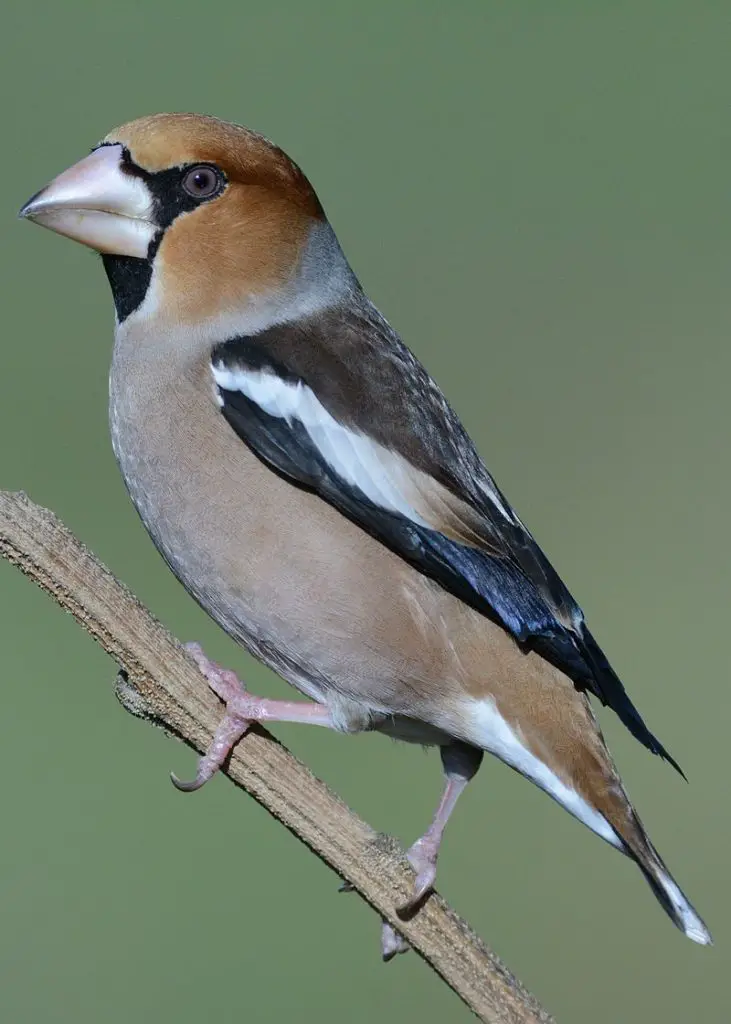
The Hawfinch is a stunning passerine bird of the finch family. It lives in Europe, North Africa, and parts of Asia and stands out for its large size amongst other members of its family.
Its most recognizable feature is its bulky bill which it uses to crack open hard nuts like hazelnuts and cherry stones.
The male has bright pinkish-red underparts while the female’s are more dull browns or greys.
Both sexes also have distinctive black wings with white patches towards their tips. Their closest living relatives are found across East Asia as well as some species in both North America and Canada.
These smart birds often gather together in small flocks during wintertime when food sources become scarce making them much easier to spot.Scientific classification:
| Kingdom | Animalia |
| Phylum | Chordata |
| Class | Aves |
| Order | Passeriformes |
| Family | Fringillidae |
| Subfamily | Carduelinae |
| Genus | Coccothraustes Brisson, 1760 |
| Species | C. coccothraustes |
Also Featured In Common Slovakian Birds, Asian Birds
5. Great Spotted Woodpecker
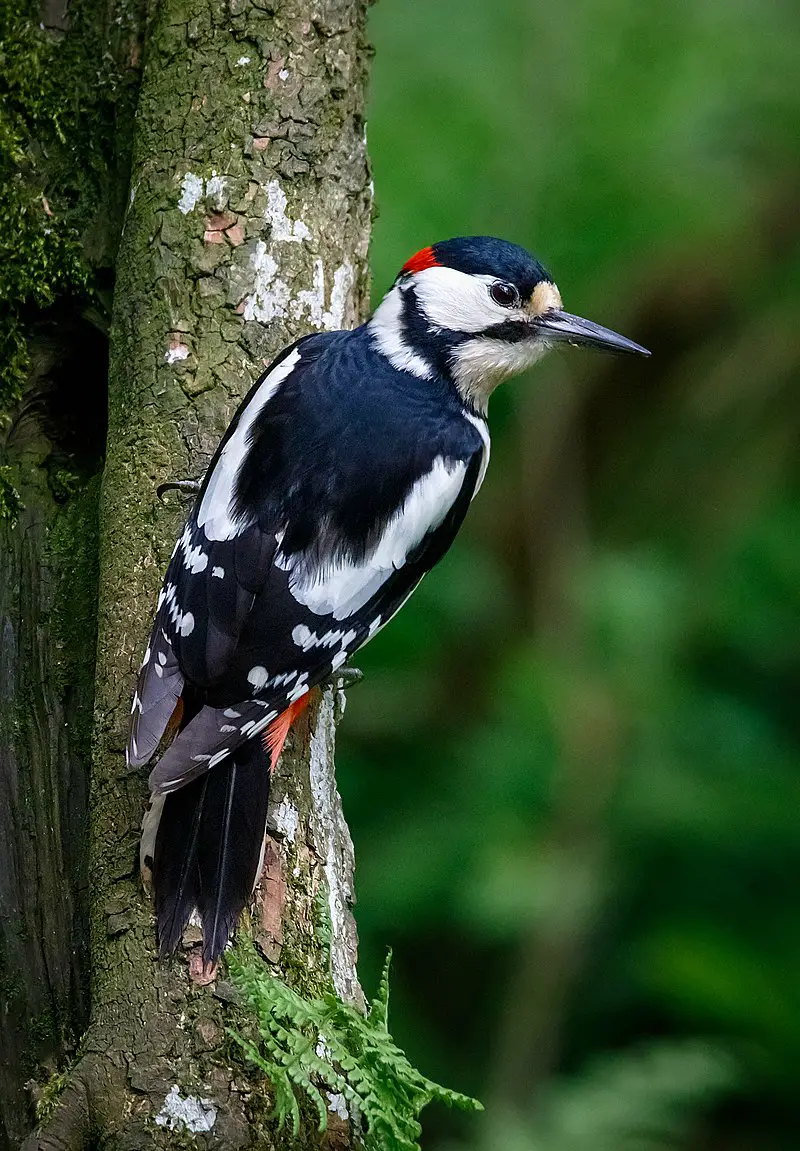
The Great Spotted Woodpecker is a fascinating bird. It has black and white feathers, with red patches on its lower belly and head or neck depending on whether it’s male or young.
This species inhabits most of the Palearctic region as well as some parts of North Africa.
For much of its range, it remains in one place all year round but may migrate if food sources become limited further north.
Its diet consists mainly of insects found under tree bark along with small amounts of seeds and fruit when available.
Despite being quite vocal they are hard to spot due to their camouflaged feathers which helps protect them from predators like cats and birds-of-prey.
Scientific classification:
| Kingdom | Animalia |
| Phylum | Chordata |
| Class | Aves |
| Order | Piciformes |
| Family | Picidae |
| Genus | Dendrocopos |
| Species | D. major |
6. Common Wood Pigeon
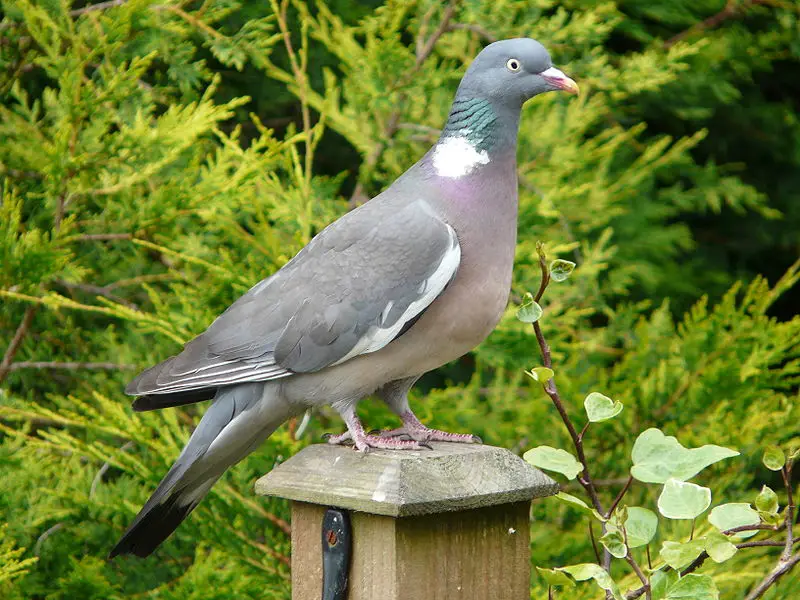
The Common Wood Pigeon is a large bird of the dove and pigeon family, native to the western Palearctic. It has grey plumage with white patches on its wings and neck.
Its head often appears darker than its body due to iridescence in some parts of its feathers. The male woodpigeons have pinkish breasts while females are more brownish-grey coloured.
These birds feed mainly on seeds, fruits, flowers and leaves but will also eat insects when available.
They breed during springtime producing 1-2 clutches per breeding season with two eggs each time which hatch after about 18 days incubation period by both parents taking turns for duty.
They make their nests from twigs collected from nearby trees or places close by and usually raise only one brood at a time making them an important part of nature’s balance as they help keep insect populations under control through their diet choices.
Scientific classification:
| Kingdom | Animalia |
| Phylum | Chordata |
| Class | Aves |
| Order | Columbiformes |
| Family | Columbidae |
| Genus | Columba |
| Species | C. palumbus |
7. Eurasian Collared Dove
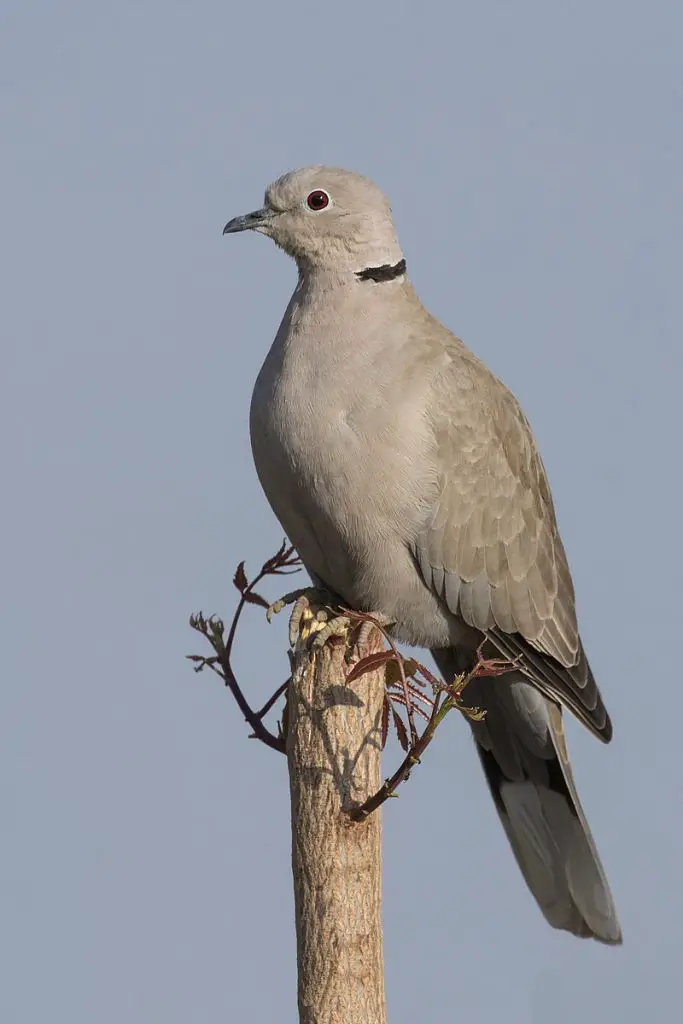
The Eurasian collared dove is a species of bird native to Europe and Asia, with its range expanding through introduction in Japan, North America, and islands in the Caribbean.
It has become so widespread that it is listed as Least Concern on the IUCN Red List. The scientific name for this bird was proposed by Hungarian naturalist Imre Frivaldsz – Columba decaocto.
This beautiful creature typically measures between 33-37 cm from tip to tail feathers, displaying an overall greyish brown plumage; they also have a distinctive black half collar around their neck which gives them their common name.
These birds are mainly found inhabiting open woodlands or agricultural lands near human settlements where there’s plenty of food available such as grain fields or gardens where fruits can be eaten off trees.
With a vast global population trend increasing steadily each year these birds make great additions to many backyards throughout the world.
Scientific classification:
| Kingdom | Animalia |
| Phylum | Chordata |
| Class | Aves |
| Order | Columbiformes |
| Family | Columbidae |
| Genus | Streptopelia |
| Species | S. decaocto |
8. Barn Owl

Barn owls are a beautiful and fascinating species of birds found around the world, with the exception of polar and desert regions, most of Indonesia and some Pacific Islands.
They have large eyes, thin legs and long wings that help them to hunt silently in low light conditions.
Their white colouring helps them blend into their surroundings making it easier for them to catch prey.
Barn owls are nocturnal hunters who use their impressive hearing capabilities to locate rodents moving within vegetation or tunnels beneath the ground.
They also feed on insects such as beetles, moths etc., which they can detect from high up in flight using their excellent vision even at night time.
The barn owl plays an important role in balancing ecosystems by controlling rodent populations which is why they should be protected wherever possible so that this vital service continues uninterruptedly.
Scientific classification
| Kingdom | Animalia |
| Phylum | Chordata |
| Class | Aves |
| Order | Strigiformes |
| Family | Tytonidae |
| Genus | Tyto |
| Species | T. alba |
9. Common Chaffinch

The Common Chaffinch is a beautifully coloured small passerine bird belonging to the finch family.
The males have striking blue-grey caps and rust-red underparts, while the females are more subtle in their colouring but both possess two distinct white wing bars and white sides on their tails.
This gorgeous bird has an incredibly strong voice which can be heard for miles as it sings from exposed perches during mating season.
It lives mainly throughout Europe but also in parts of North Africa and Asia too, favoring woodland areas with plenty of shrubs or trees nearby where they find shelter amongst foliage when needed.
They feed predominantly on seeds from weeds or grains found within grasslands making them particularly useful birds for farmers who rely heavily upon pest control that these little ones provide.
Scientific classification:
| Kingdom | Animalia |
| Phylum | Chordata |
| Class | Aves |
| Order | Passeriformes |
| Family | Fringillidae |
| Subfamily | Fringillinae |
| Genus | Fringilla |
| Species | F. coelebs |
10. Eurasian Jay

The Eurasian jay is a beautiful passerine bird of the crow family, Corvidae. It has bright pinkish brown plumage with white throat and two black stripes on each side.
The upper wings have an eye-catching blue panel while its tail is all black in color. This species mainly resides in woodlands, spanning over vast regions from western Europe to India and even north-west Africa.
Its diet consists of small invertebrates like insects as well as fruits, seeds and nuts making it quite adaptable when it comes to food sources.
With its loud calls echoing through the forests they inhabit, this amazing creature will definitely make your day brighter if you ever get the chance to spot one.
Scientific classification:
| Kingdom | Animalia |
| Phylum | Chordata |
| Class | Aves |
| Order | Passeriformes |
| Family | Corvidae |
| Genus | Garrulus |
| Species | G. glandarius |
11. Marsh Tit
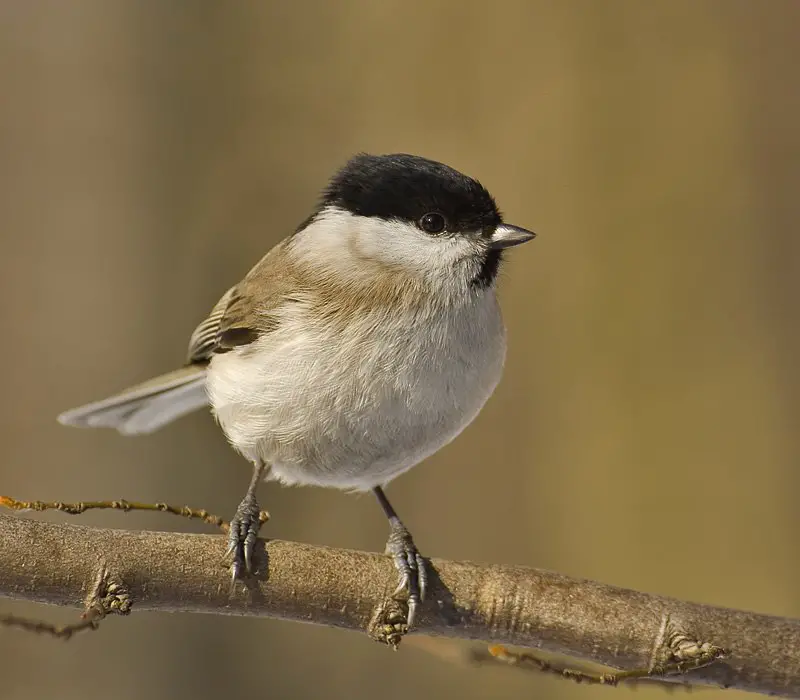
The Marsh Tit is a small bird, measuring 12 cm long and weighing only 12 g. It has black crown and nape combined with pale cheeks, brown back as well as greyish-brown wings and tail.
There are 8 to 11 subspecies of this passerine bird in the tit family Paridae that is closely related to Willow Tit, Père David’s Tit, Songar Tits.
They inhabit deciduous or mixed woods with dense undergrowth where they feed on insects along with seeds found amongst dead leaves on ground.
Their nests are built inside tree hollows lined up by feathers while its eggs have white background spotted heavily with reddish-brown markings making them easily identifiable from other birds’.Scientific classification:
| Kingdom | Animalia |
| Phylum | Chordata |
| Class | Aves |
| Order | Passeriformes |
| Family | Paridae |
| Genus | Poecile |
| Species | P. palustris |
Also Featured In: Birds You’ll Find in Hokkaido,
12. Crested Tit
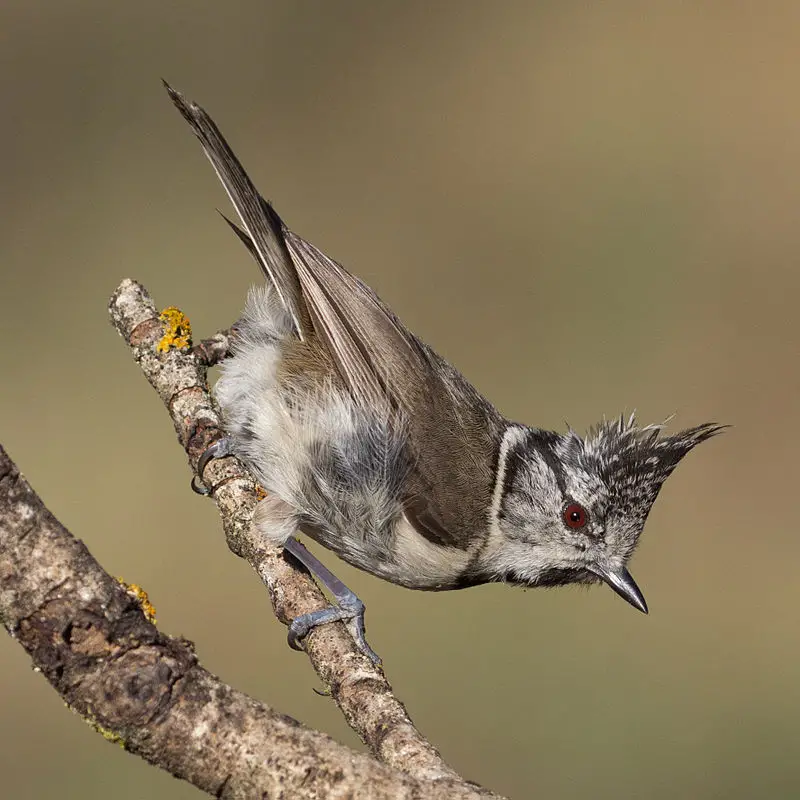
The Crested tit is a beautiful bird found in Europe. It belongs to the family Paridae and its scientific name is Lophophanes cristatus.
This species can be seen mainly in coniferous forests of northern and central Europe, as well as deciduous woodlands of France and the Iberian peninsula.
The most prominent feature of this species is its crest which makes it easily identifiable from other birds in the area. Its diet consists mostly of insects, seeds, berries and nuts – all essential nutrients for their survival.
In Great Britain, they are primarily found inhabiting ancient pinewoods such as Inverness or Straffordshire where you may catch sight of them if you’re lucky.
All-in-all these striking little creatures make an exciting addition to any nature enthusiast’s list – so keep your eyes peeled next time you go out exploring.Scientific classification:
| Kingdom | Animalia |
| Phylum | Chordata |
| Class | Aves |
| Order | Passeriformes |
| Family | Paridae |
| Genus | Lophophanes |
| Species | L. cristatus |
Also Featured In: European Birds, Most Common Scotland Birds
13. Dunnock
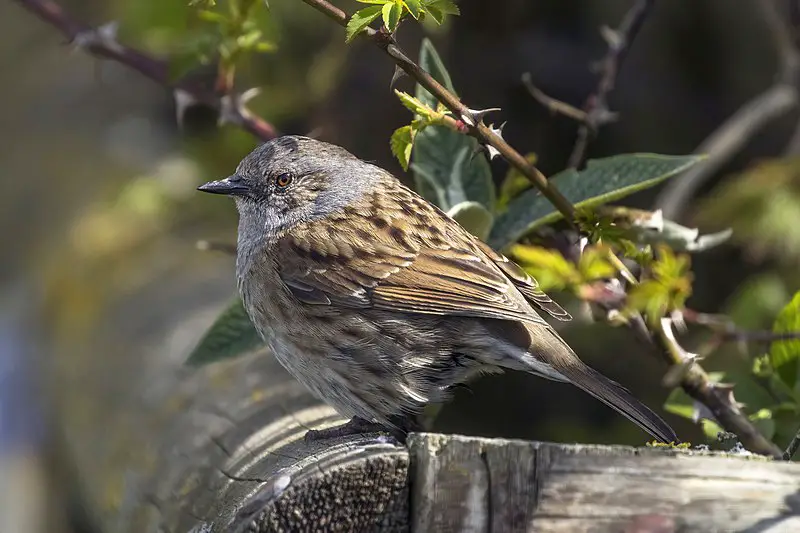
The Dunnock, also known as the Hedge Accentor, Hedge Sparrow and Hedge Warbler, is a small passerine bird found in temperate climates of Europe and Asia.
It has even been successfully introduced to New Zealand. The Dunnock stands out amongst its family members as it can thrive in many different habitats beyond just mountainous areas – making it more widespread than other birds of its kind.
With greyish-brown upper parts and whitish underparts with brown streaks on them; they are easily distinguished from their fellow species by their distinctive saucy call.
Often seen searching for food on the ground or darting around bushes looking for insects and worms; these lively little birds make an attractive addition to any garden or parkland setting.Scientific classification:
| Kingdom | Animalia |
| Phylum | Chordata |
| Class | Aves |
| Order | Passeriformes |
| Family | Prunellidae |
| Genus | Prunella |
| Species | P. modularis |
14. Eurasian Bullfinch
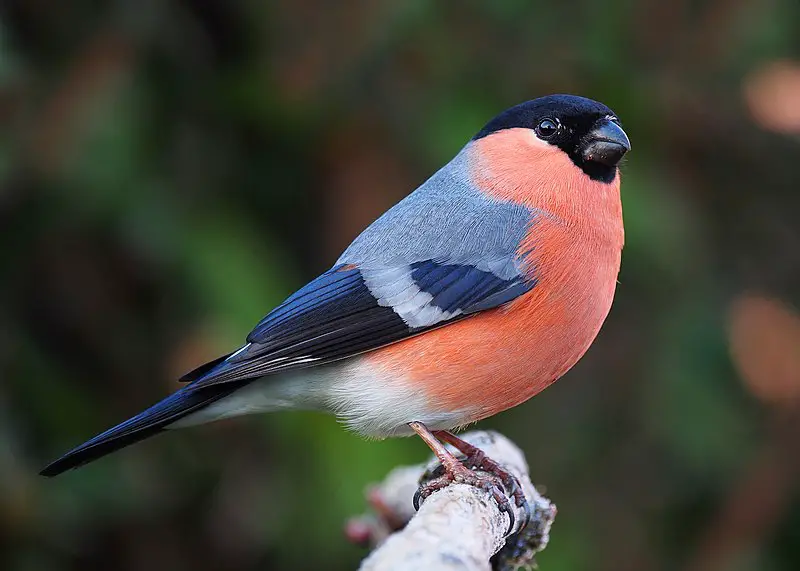
The Eurasian Bullfinch is a small bird found in the finch family, Fringillidae. It has an unmistakable appearance with its plump body and bright pink chest.
Its head is grayish-brown while its wings are black with white edging along the tips of some feathers. The tail is also black tipped with white or yellowish edges.
They inhabit open woodlands and gardens throughout Europe, North Africa, parts of Asia and western Siberia in search of food such as berries, buds or insects which they feed on during winter months when other sources become scarce.
These birds form monogamous pairs to breed each year between March through August where both parents incubate their eggs during this time until hatching around mid-May.
Usually producing two broods per season if conditions are favorable for nesting success.Scientific classification:
| Kingdom | Animalia |
| Phylum | Chordata |
| Class | Aves |
| Order | Passeriformes |
| Family | Fringillidae |
| Subfamily | Carduelinae |
| Genus | Pyrrhula |
| Species | P. pyrrhula |
15. Eurasian Blackcap
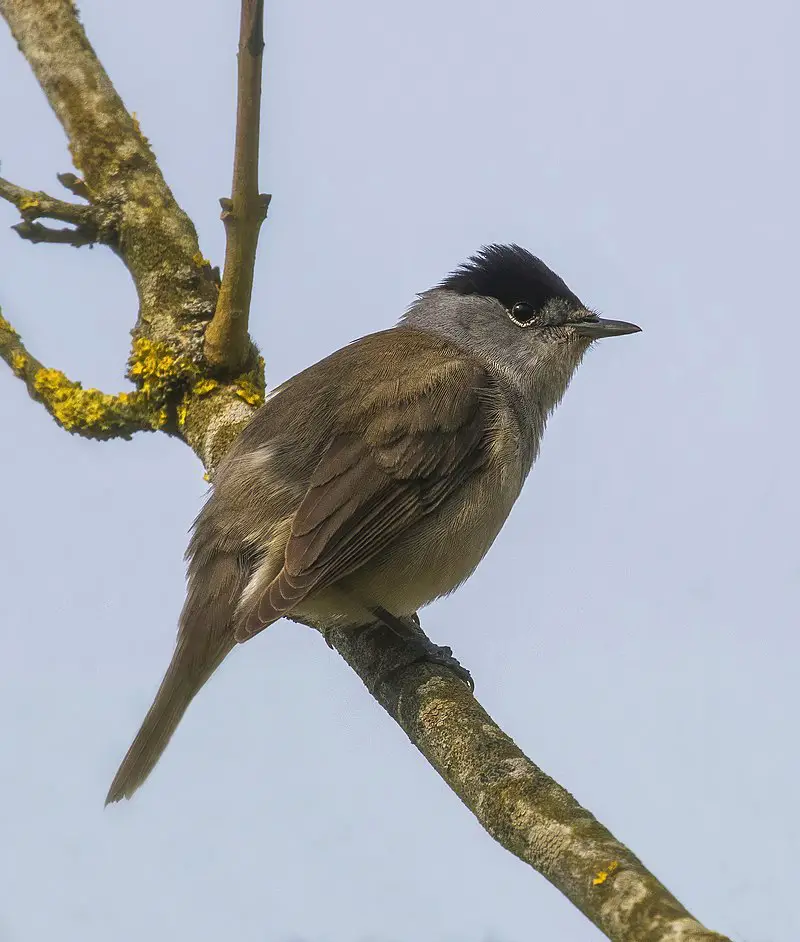
The Eurasian blackcap is a typical warbler, found across Europe and Asia. It has mainly olive-grey upperparts and pale grey underparts. The male has a striking black cap while the female’s is reddish brown in colour.
Males have an attractive song which is usually a rich musical warbling heard during the breeding season.
Blackcaps are small birds with short tails, long wings, stout bills and large feet – perfect for their insectivorous diet of spiders, beetles and other invertebrates they find as they hop along forest floors or among shrubs.
As well as eating insects they also feed on fruits such as elderberries at certain times of year to gain extra energy reserves before migrating southwards to warmer climates over winter months where food sources may be scarce or harder to find.Scientific classification:
| Kingdom | Animalia |
| Phylum | Chordata |
| Class | Aves |
| Order | Passeriformes |
| Family | Sylviidae |
| Genus | Sylvia |
| Species | S. atricapilla |
Also Featured In: Most Common Songs Birds that Live around You, Italian Birds You Should Know
16. Cormorants
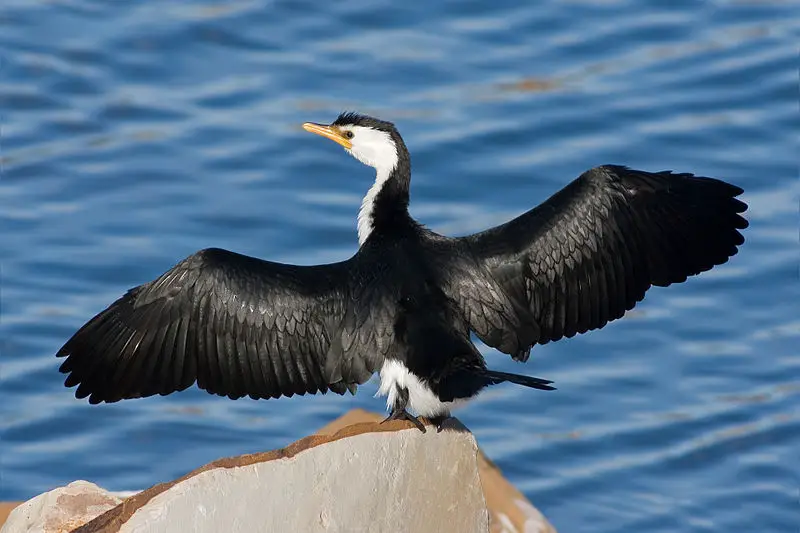
Cormorants are a family of aquatic birds found around the world. They include 40 species, such as great cormorants and common shags.
In Britain, these two species are the most commonly seen in their natural habitats.
Cormorants have long necks, webbed feet and can be identified by their glossy black feathers which they use to help them swim through water with ease as they hunt for food like fish or crustaceans.
They have an impressive wingspan often reaching up to five feet across when fully extended.
Despite being strong swimmers, these birds also enjoy spending time perched on rocks near rivers or shorelines where they will preen themselves in order to keep clean and dry during cooler weather conditionsScientific classification:
| Kingdom | Animalia |
| Phylum | Chordata |
| Class | Aves |
| Order | Suliformes |
| Family | Phalacrocoracidae Reichenbach, 1850 |
Also Featured In: Birds You’ll Find in the Sea, Turkey Birds You Should Know
17. European Green Woodpecker
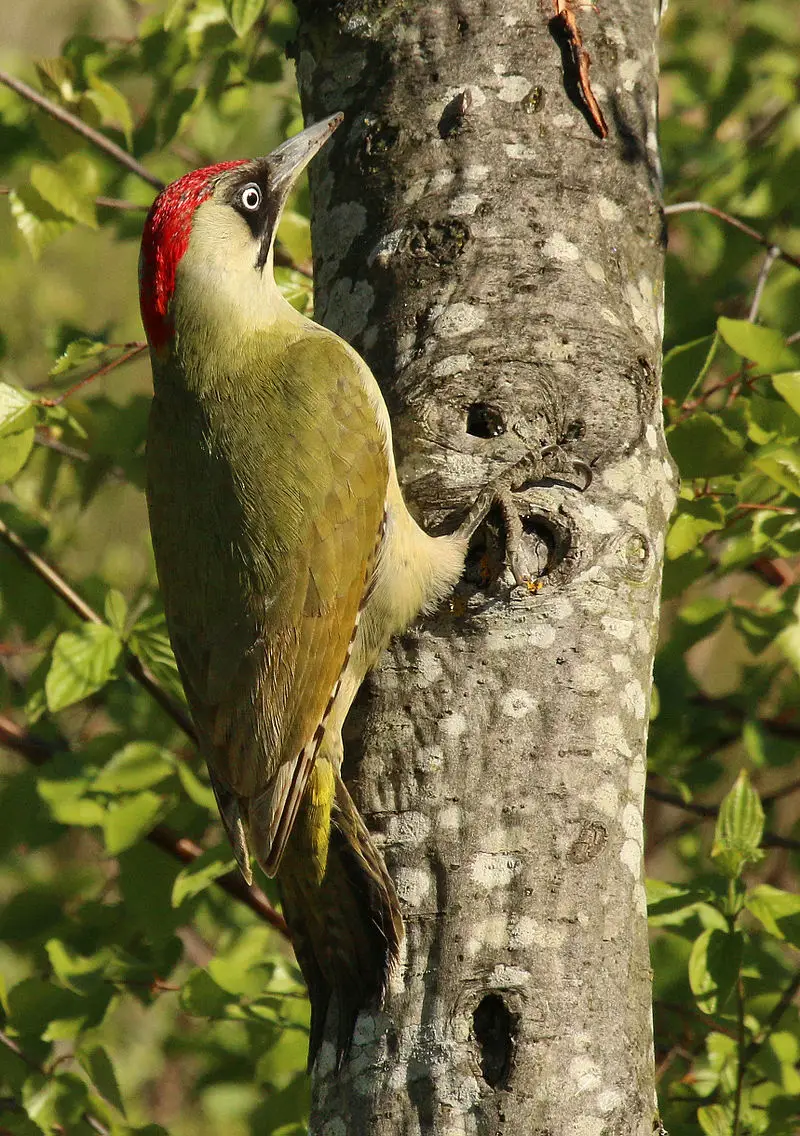
The European green woodpecker is a vibrant species with striking features. The body has an emerald hue, while males have a red crown and black moustache that extends to the middle of their forehead.
Females lack this characteristic feature but instead possess barred markings beneath the wings as well as yellow throats and cheeks.
It can be found in many parts of Europe and western Palearctic regions such as Spain and Portugal where it is replaced by its similar cousin; Iberian green woodpecker (Picus sharpei).
This bird loves inhabiting open forests or grasslands for its food source which typically consists on insects like ants, beetles, spiders among others.
Its powerful bill allows it to dig into tree bark searching for larvae underneath making it an efficient predator in these environments.Scientific classification:
| Kingdom | Animalia |
| Phylum | Chordata |
| Class | Aves |
| Order | Piciformes |
| Family | Picidae |
| Genus | Picus |
| Species | P. viridis |
18. Little Bustard
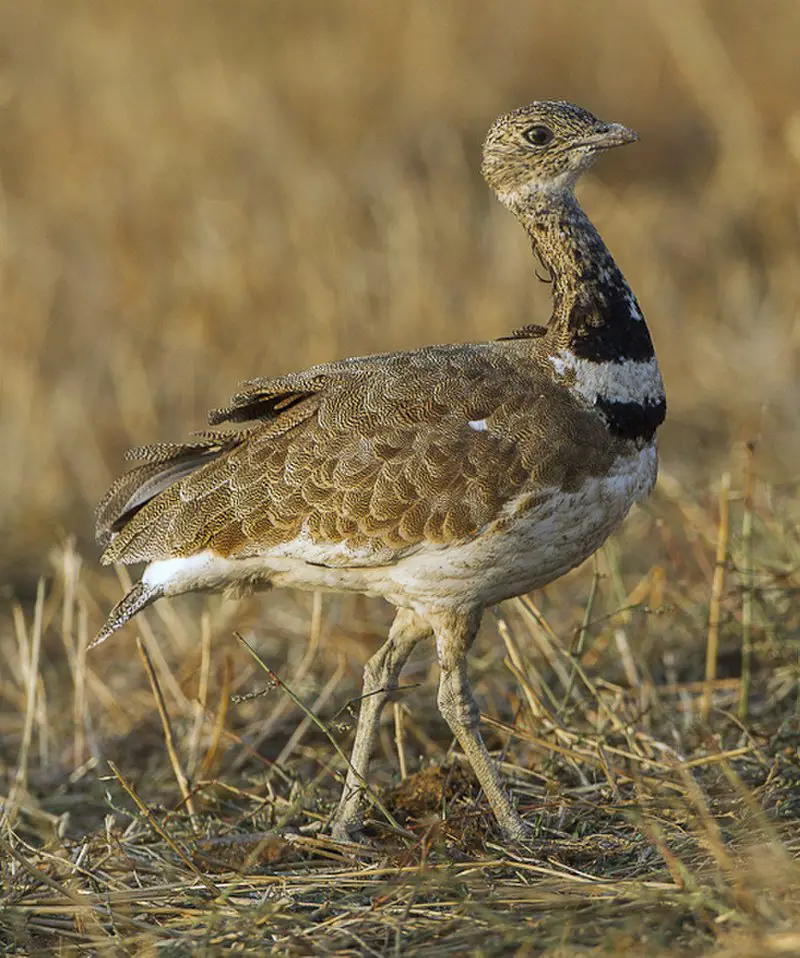
The Little Bustard (Tetrax tetrax) is a bird belonging to the bustard family. It can be found in Southern Europe and Western/Central Asia, with some populations migrating south during wintertime.
This species has an ancient Greek genus name meaning ‘gamebird’, which was mentioned by Aristophanes and other authors of antiquity.
Physically, this bird features mottled feathers that range from greyish-brown on its upperparts to light sandy colors underneath.
Moreover, it also showcases black stripes above each eye as well as dark barring on its wings and tailfeathers.
The little bustard typically feeds off insects while walking or running through open plains but will occasionally nest near cultivated fields too.
All things considered, we should definitely appreciate these birds for their beauty and resilience.Scientific classification:
| Kingdom | Animalia |
| Phylum | Chordata |
| Class | Aves |
| Order | Otidiformes |
| Family | Otididae |
| Genus | Tetrax T. Forster, 1817 |
| Species | T. tetrax |
Also Featured In: Armenian Birds You Should Know, Common Birds of Portugal
19. Bar-Tailed Godwit
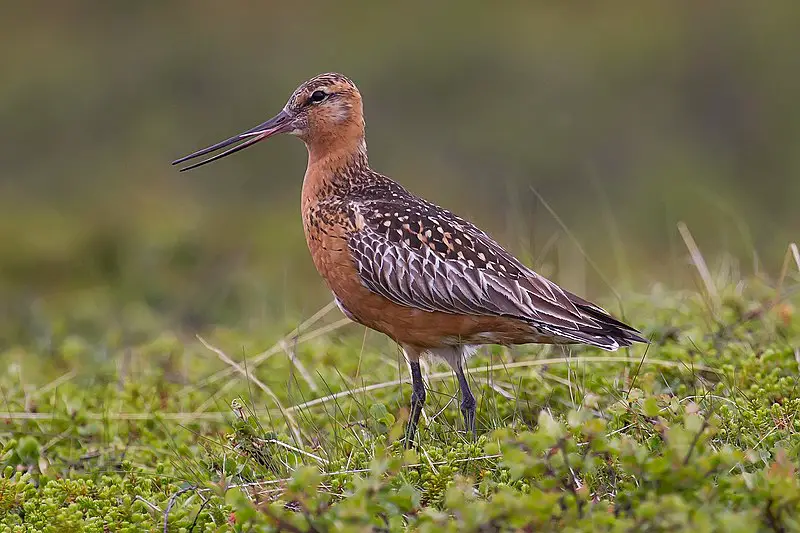
The bar-tailed godwit is a remarkable bird, both in its appearance and behavior. Its striking red breeding plumage stands out amongst the typical browns of other waders.
Long legs help it traverse coastal mudflats and estuaries where it forages on bristle-worms and shellfish.
It has an upturned bill that gives it further distinction from other shorebirds.
Bar-tailed godwits breed on Arctic coasts stretching all the way to Alaska during summer months before migrating south towards warmer temperate or tropical regions for wintering each year – quite incredible.
Despite their long migratory journeys they are still considered a common species due to large numbers making these arduous trips annually, although some populations have experienced declines recently.Scientific classification:
| Kingdom | Animalia |
| Phylum | Chordata |
| Class | Aves |
| Order | Charadriiformes |
| Family | Scolopacidae |
| Genus | Limosa |
| Species | L. lapponica |
20. Eurasian Eagle-Owl
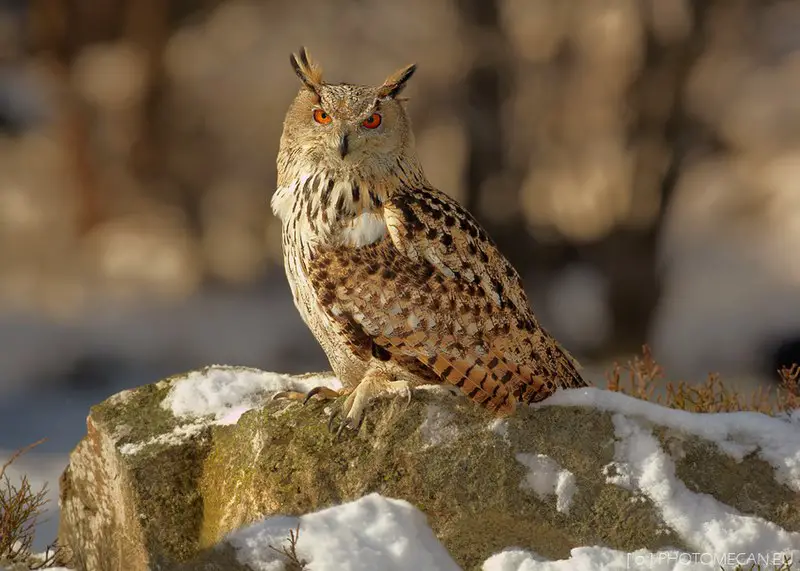
The Eurasian eagle-owl is a majestic bird that inhabits much of Eurasia. It has an impressive wingspan of up to 6 ft 2 in, and females can reach lengths of 30 inches.
The Uhu, as it is sometimes called, boasts distinctive ear tufts which are easily visible against its mottled brown plumage.
This powerful owl preys on small mammals like rodents and hares; however due to their large size they have been known to hunt larger prey such as foxes or even deer.
They usually nest in cavities located high off the ground but will also use manmade structures if available.
With their prominent presence across Europe, these birds are often seen perched atop trees during the day before setting out for hunting at night – truly magnificent creatures.Scientific classification:
| Kingdom | Animalia |
| Phylum | Chordata |
| Class | Aves |
| Order | Strigiformes |
| Family | Strigidae |
| Genus | Bubo |
| Species | B. bubo |
21. Common Kingfisher
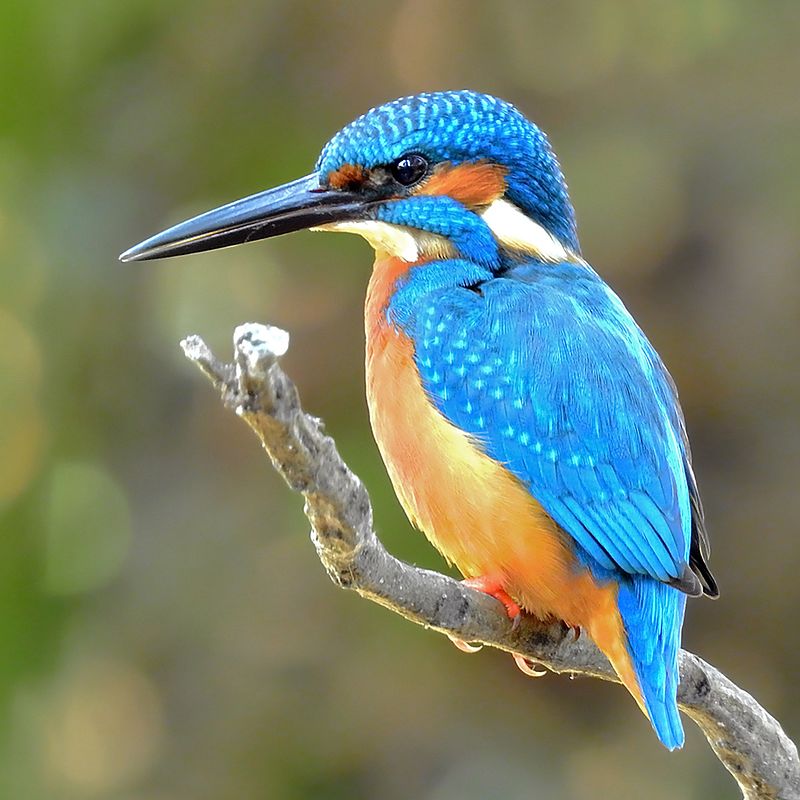
The Common Kingfisher is a small, sparrow-sized bird that can be found across Eurasia and North Africa. It has the typical short tail and large head of kingfishers with seven different subspecies recognized in its range.
They are mainly resident birds but will migrate away during winter when rivers freeze over. The species usually live near bodies of water such as streams or lakes.
Where they hunt for fish by diving from above into the water after spotting their prey below them.
These brightly coloured birds have an unmistakable vibrant blue plumage along with orange underparts and white patches on their wings which makes them easy to recognize amongst other similar looking species.
Their call is loud and shrill making it one of the most recognizable sounds heard around wetlands throughout Europe.Scientific classification:
| Kingdom | Animalia |
| Phylum | Chordata |
| Class | Aves |
| Order | Coraciiformes |
| Family | Alcedinidae |
| Subfamily | Alcedininae |
| Genus | Alcedo |
| Species | A. atthis |
22. Great Egret
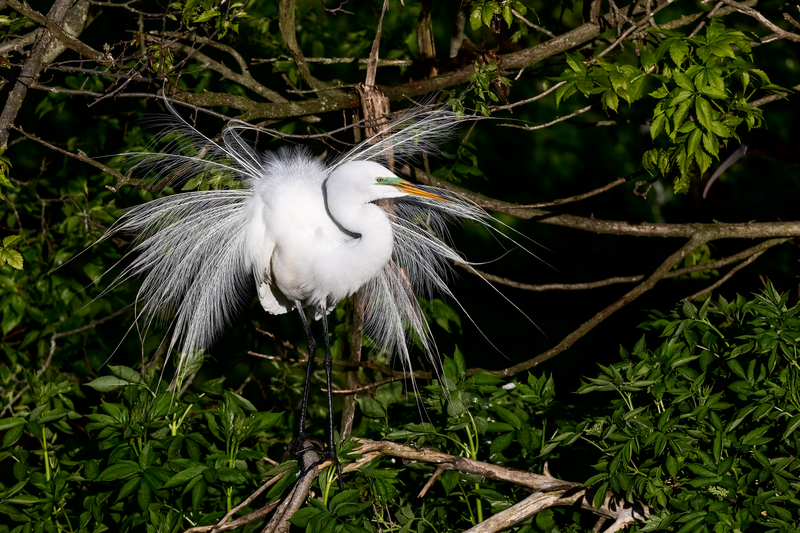
The Great Egret is a large, white bird found in many regions of the world. It has four subspecies that reside across Asia, Africa, Americas and southern Europe.
This species usually lives near bodies of water such as lakes and marshes. They are also now starting to spread into more northern areas of Europe due to climate change.
These birds have long yellow legs with an impressive wingspan for their size which allows them to soar majestically through the sky hunting for fish or amphibians in shallow waters below.
Their feathers have been used historically by Native Americans as part of traditional garments or ceremonies but this practice should be avoided today so these amazing creatures can thrive without harm from humans.Scientific classification:
| Kingdom | Animalia |
| Phylum | Chordata |
| Class | Aves |
| Order | Pelecaniformes |
| Family | Ardeidae |
| Genus | Ardea |
| Species | A. alba |
Also Featured In: Water Birds Live around Us, Most Common Romanian Birds
23. Greater Flamingo
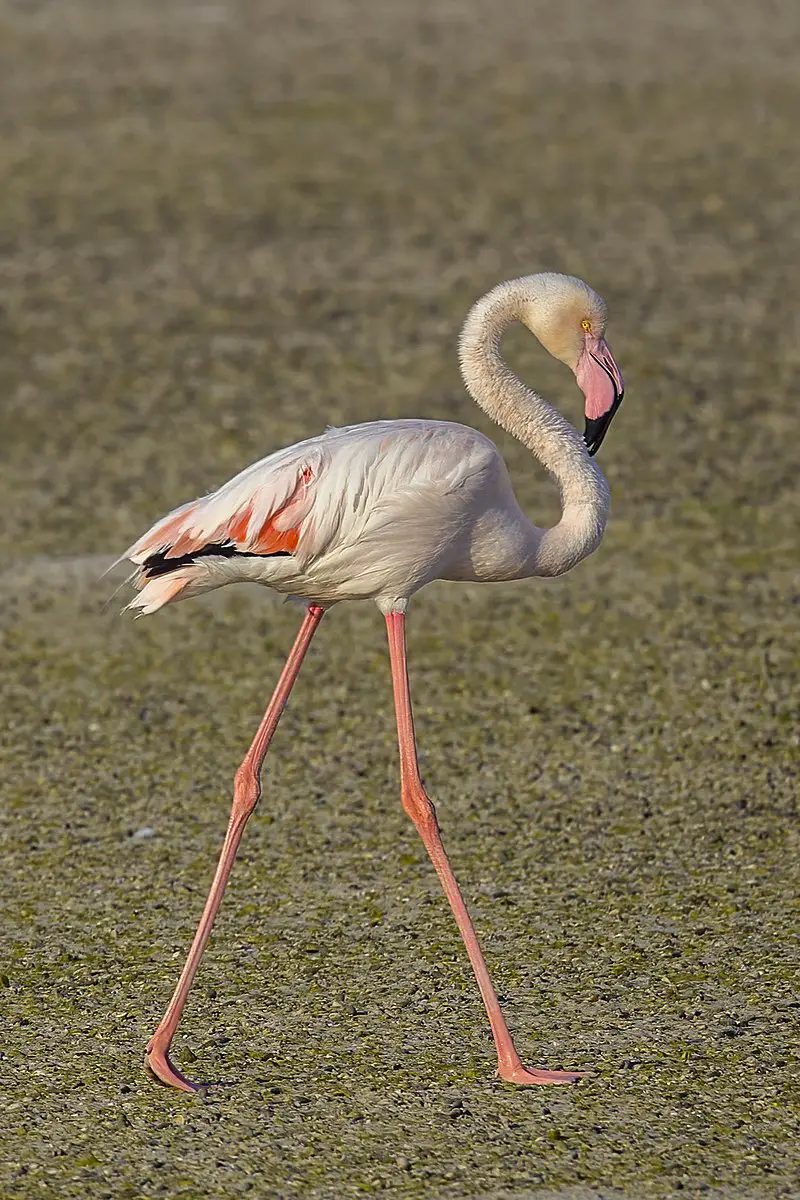
The Greater Flamingo is an impressive bird belonging to the Phoenicopteridae family. It’s one of the most widespread and largest species among flamingos with a range covering Africa, India, Middle East and southern parts of Europe.
The bird was described by Peter Simon Pallas in 1811 but it wasn’t until recently that it was distinguished from American Flamingo (Phoenicopterus ruber), due to differences in coloration between them.
This large-bodied wading bird stands tall at 1m on average and has bright pink plumage adorning its long neck and legs which gives way to black wing tips when flying.
Its diet mainly consists of algae, crustaceans as well as small aquatic animals like mollusks found while they feed along shallow lakes or lagoons where they live their social lives surrounded by others just like them.Scientific classification:
| Kingdom | Animalia |
| Phylum | Chordata |
| Class | Aves |
| Order | Phoenicopteriformes |
| Family | Phoenicopteridae |
| Genus | Phoenicopterus |
| Species | P. roseus |
Also Featured In: Lebanon Birds Live in Semi-Desert Areas, Gujarati Birds
24. Grey Heron
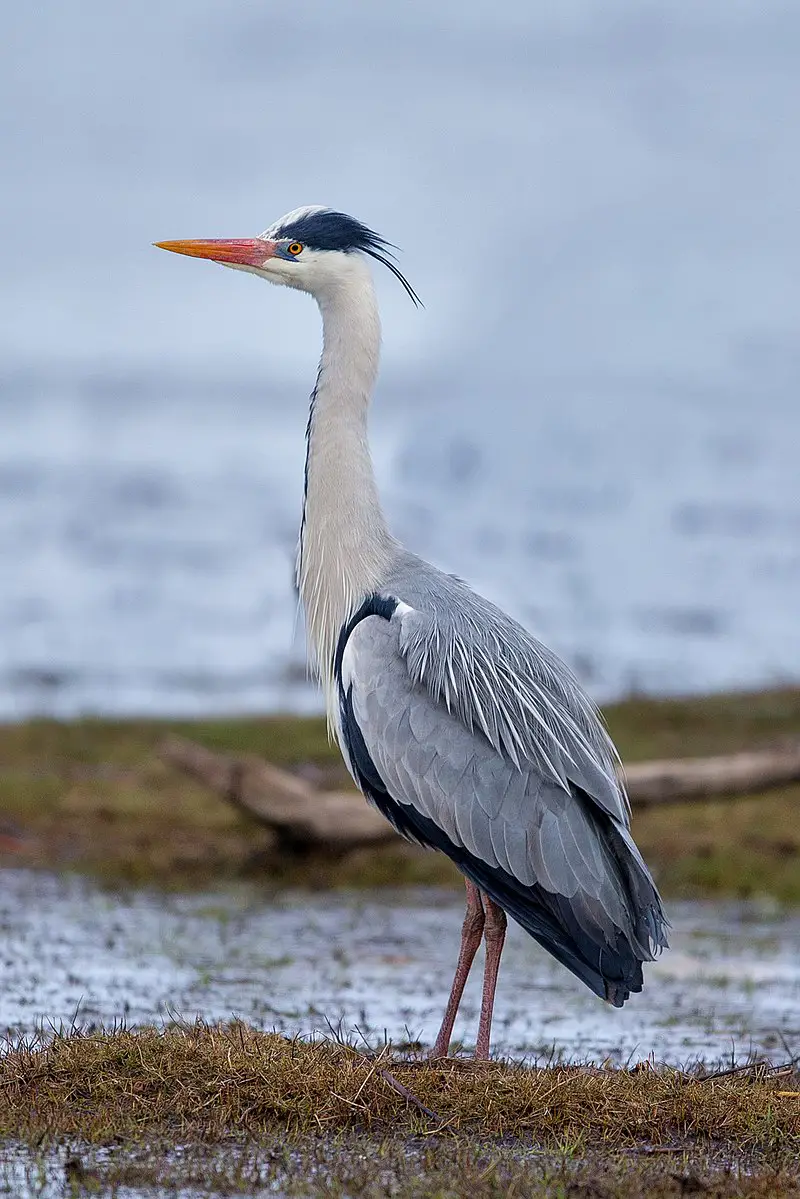
The grey heron is a majestic bird found in temperate regions of Europe, Asia and parts of Africa. It has long legs to wade through the shallow waters where it feeds on aquatic creatures such as frogs, fish and insects.
In wintertime some migrate southwards but others stay put in their natural habitats; lakes, rivers and marshes. They can also be spotted near coasts or along estuaries.
Grey Herons have beautiful blue-grey feathers and an impressive wingspan that makes them stand out from other birds when they soar gracefully across the sky.
These graceful creatures are not only easy on the eye but wise hunters too.Scientific classification:
| Kingdom | Animalia |
| Phylum | Chordata |
| Class | Aves |
| Order | Pelecaniformes |
| Family | Ardeidae |
| Genus | Ardea |
| Species | A. cinerea |
25. Common Kestrel
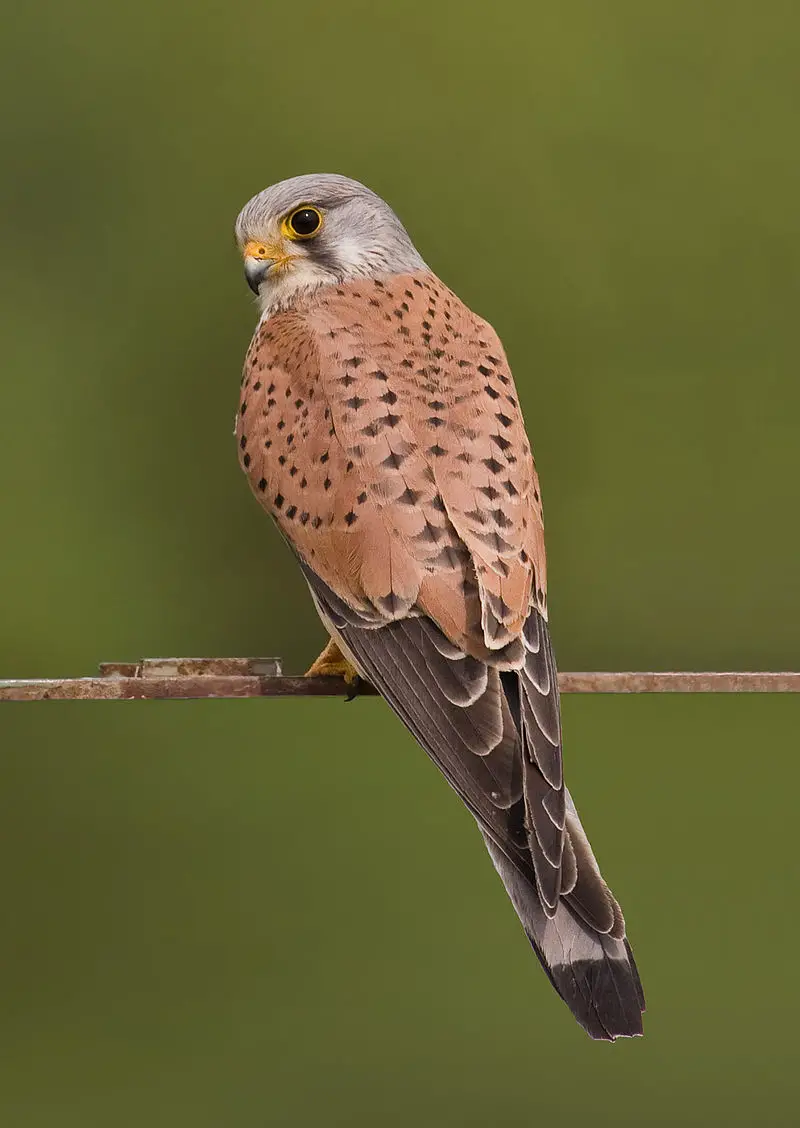
The Common Kestrel is a species of bird belonging to the kestrel group of Falconidae. It can be found in Europe, Asia and parts of Africa, though it is most commonly seen in the United Kingdom where it’s simply referred to as “Kestrel”.
This falcon has powerful talons and exceptional vision which makes them adept hunters who feed on small mammals such as voles or mice.
They are also renowned for their hovering flight – they will hover up high and scan with amazing accuracy below until they spot prey beneath them.
The beautiful plumage on this raptor varies from country to country but generally consists of shades ranging from grey-browns through chestnut reds with tawny hues around its face area.Scientific classification:
| Kingdom | Animalia |
| Phylum | Chordata |
| Class | Aves |
| Order | Falconiformes |
| Family | Falconidae |
| Genus | Falco |
| Species | F. tinnunculus |
Also Featured In: Common Birds in the Cities, Birds of Wales: Exploring Diverse Habitats and Conservation Efforts
26. Common Buzzard
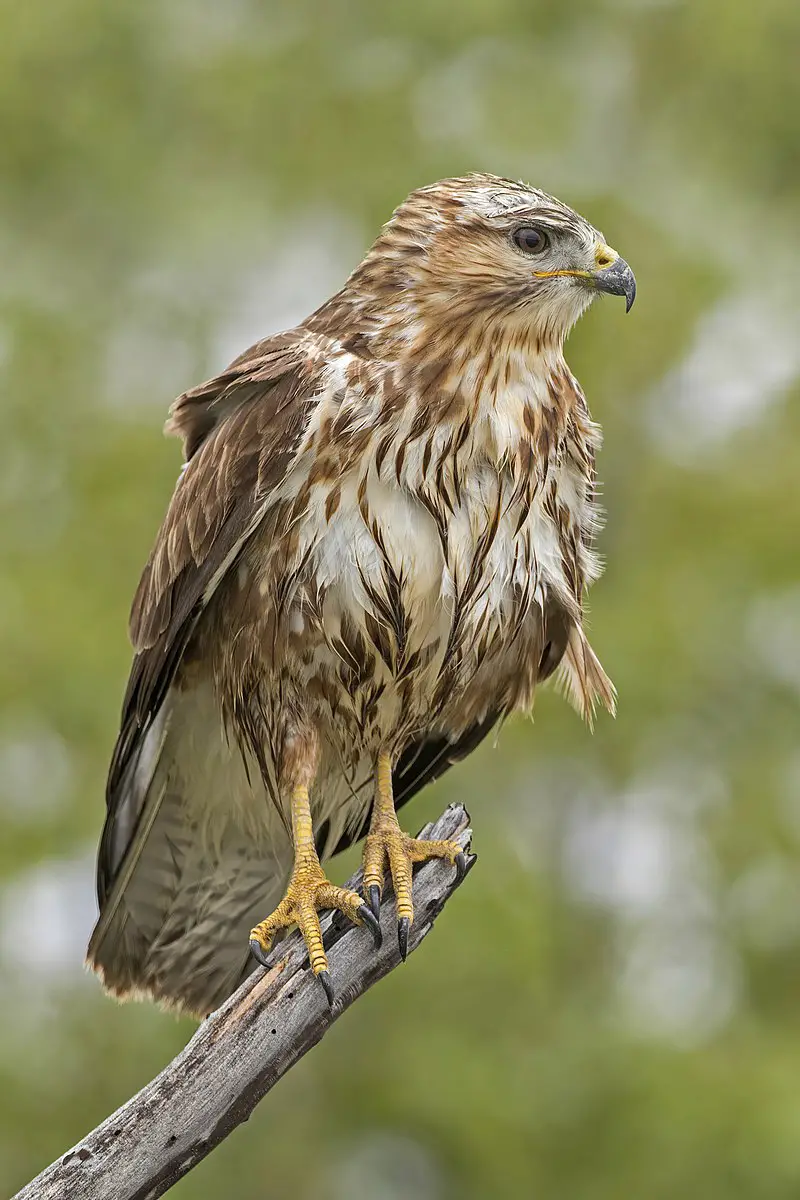
The common buzzard is a large bird of prey found across much of Europe, the Palearctic region and parts of Asia. This species has medium to dark brown plumage with lighter streaks on its body.
It has broad wings which are useful for soaring high in search of food such as small rodents, lizards, amphibians and insects.
Buzzards often hunt from a perch or while hovering above open areas like fields and meadows where they can easily spot their prey below.
They also take advantage of thermals rising up from warm ground during hot summer days to gain altitude without expending energy flapping their wings.
In addition to hunting alone, these birds will sometimes join forces with others when scavenging carrion or chasing away predators that threaten their nests full of eggs or young chicksScientific classification:
| Kingdom | Animalia |
| Phylum | Chordata |
| Class | Aves |
| Order | Accipitriformes |
| Family | Accipitridae |
| Genus | Buteo |
| Species | B. buteo |
27. Northern Lapwing
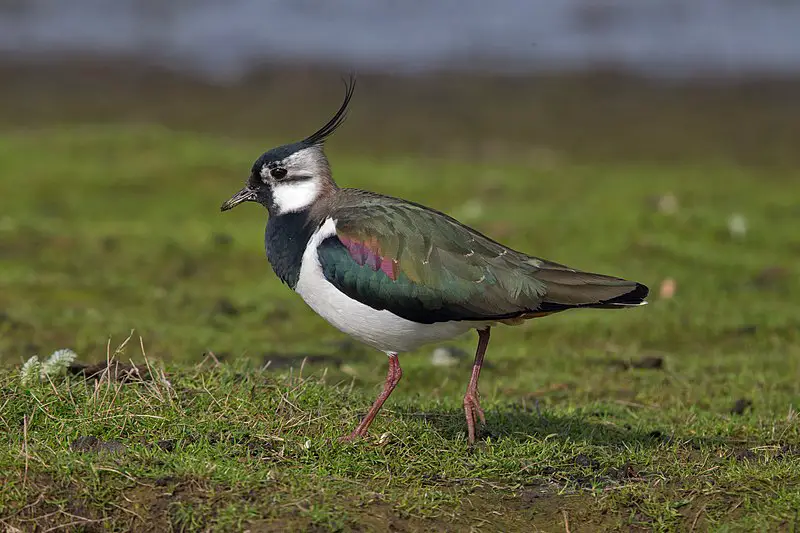
The Northern Lapwing is a beautiful bird found in temperate Eurosiberia. It has several names, such as Peewit or Pewit, Tuit, Green Plover and Pyewipe – all of which describe its unique call that resembles the sound of “peee-wit.”
During winter months it migrates to places like North Africa, India and parts of China.
The adult lapwings are mainly black and white with crest on their heads while juveniles have mottled brown feathers.
They feed on insects which they catch by making a short flight from the ground then hovering briefly before diving back down again.
Their long red legs make them stand out amongst other birds when they walk around looking for food.
A lovely sight.Scientific classification:
| Kingdom | Animalia |
| Phylum | Chordata |
| Class | Aves |
| Order | Charadriiformes |
| Family | Charadriidae |
| Genus | Vanellus |
| Species | V. vanellus |
28. New World Quail
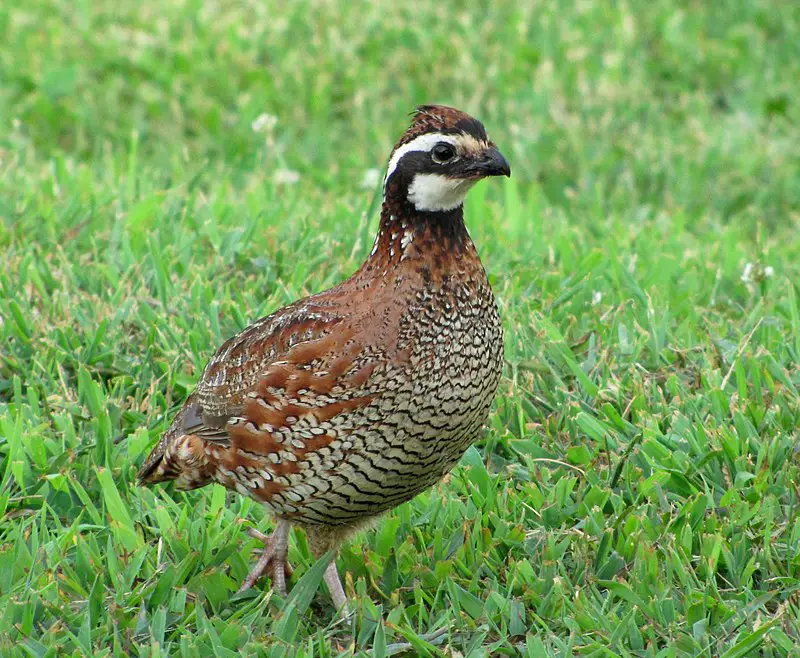
New World quail are small birds found in the Americas, from Canada to Brazil. They belong to their own family, Odontophoridae, and have similar appearance and habits as Old World quail which belong to a different family.
New World Quails come in various species such as California Quail and Bobwhite Quail.
These birds have adapted well to human presence due to availability of food resources like agricultural crops.
They also live close together where they form large flocks for safety against predators like foxes or hawks.
The males usually sport colorful feathers during mating season that helps them attract female mates while providing an amazing sight for us viewers.Scientific classification:
| Kingdom | Animalia |
| Phylum | Chordata |
| Class | Aves |
| Order | Galliformes |
| Superfamily | Phasianoidea |
| Family | Odontophoridae Gould, 1844 |
29. Stilts And Avocets
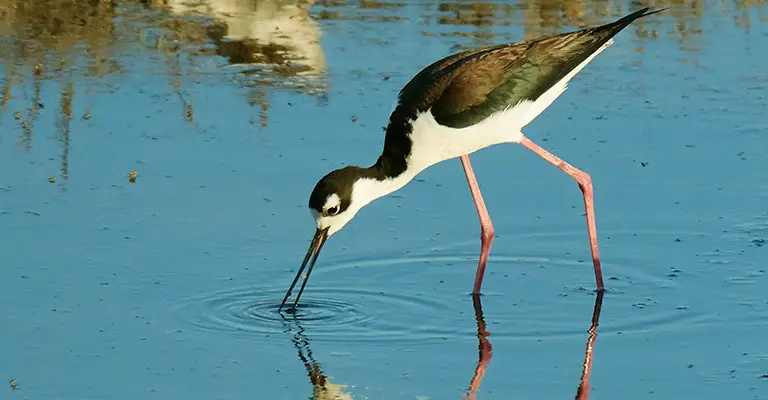
Stilts and avocets are two distinct groups of birds belonging to the family Recurvirostridae. They range in length from 30-46 cm (12-18 inches) and weigh between 140 – 435 g (4.9 – 15.3 ounces).
Males usually have slightly larger bodies than females, with long thin legs, necks and bills.
Avocet bills curve upwards uniquely while stilt beaks remain straight most times.
These wading birds live mainly near shorelines or wetlands where they feed on aquatic invertebrates like brine shrimp, insects etc., occasionally supplementing their diet with seeds or small fish too.
Stilts also inhabit open fields in search of food sources such as earthworms or grasshoppers during the non-breeding season.
Both groups migrate over large distances for warmer weathers when it gets cold outside.Scientific classification:
| Kingdom | Animalia |
| Phylum | Chordata |
| Class | Aves |
| Order | Charadriiformes |
| Suborder | Charadrii |
| Family | Recurvirostridae Bonaparte, 1854 |
30. Glareolidae
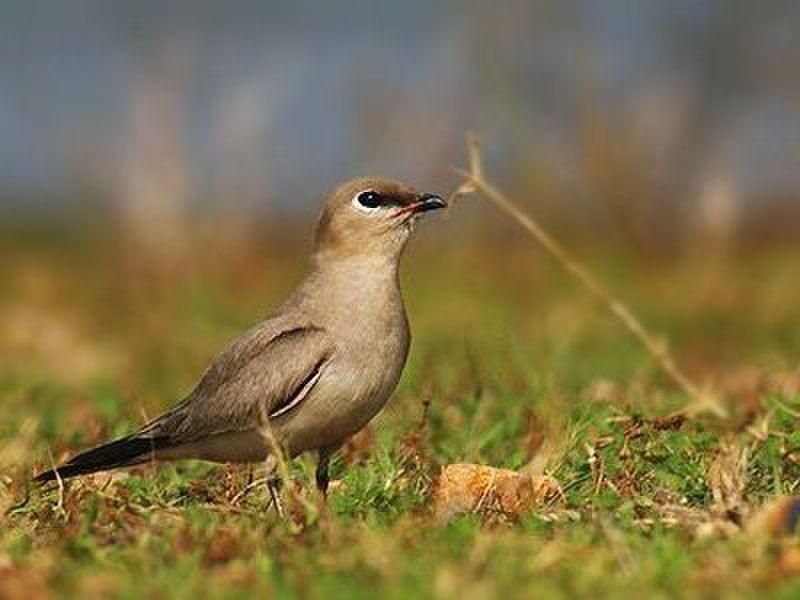
Glareolidae is a family of wading birds, consisting of four genera and 17 species. They are distinguished from other charadrii by their long bills which have a slight downward curve.
Glareolidae live around open grasslands and deserts, where they hunt for insects using the bill to probe into soil or vegetation.
Most species are found in Africa but two pratincoles inhabit parts of Europe and Asia as well.
Coursers tend to be larger than pratincoles with longer legs allowing them to run quickly across sandy dunes while feeding on small animals like lizards or spiders.
Pratincoles feed mainly on flying insects, snatching them out of midair with great agility during flight.
All glareolids share unique features such as large eyes that help it spot prey at night easily making this group one interesting bird family.Scientific classification:
| Kingdom | Animalia |
| Phylum | Chordata |
| Class | Aves |
| Order | Charadriiformes |
| Suborder | Lari |
| Family | Glareolidae CL Brehm, 1831 |
31. Carrion Crow
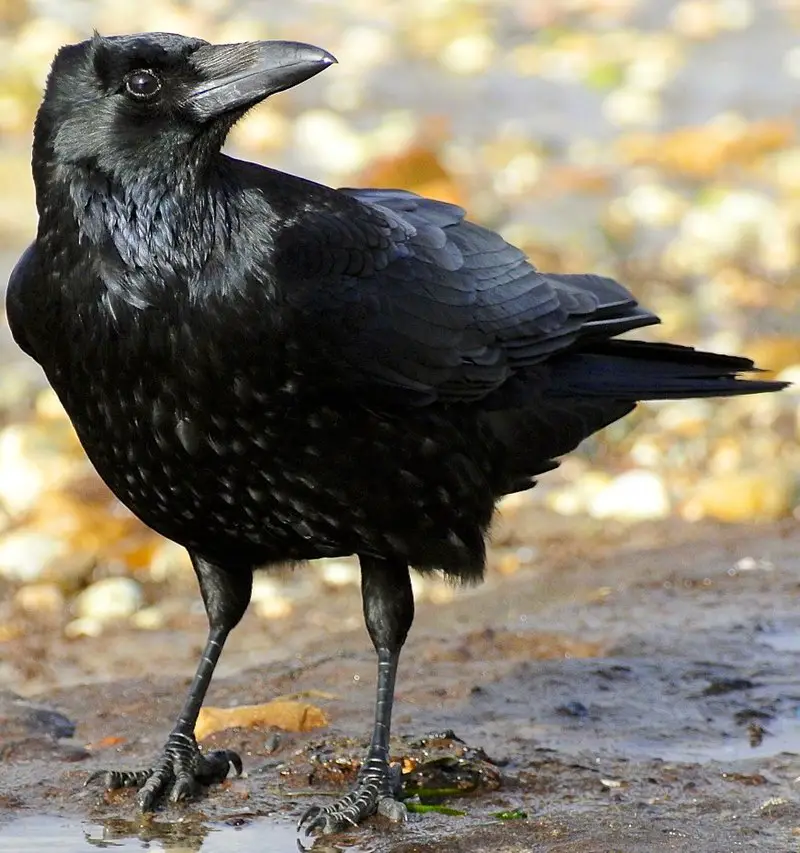
The Carrion Crow is a large, black bird that belongs to the family Corvidae and genus Corvus. Native to western Europe and Eastern Palearctic, it was one of the species described by Carl Linnaeus in his 1758 10th edition of Systema Naturae.
The name comes from Latin words meaning “crow” and “crown”. This crow has an unmistakable appearance; its entire body is covered in glossy black feathers with blue or purple iridescence on its wings when caught in sunlight.
Its diet consists mainly of carrion but they also eat insects, fruits, grains, nuts , eggs and small vertebrates such as young birds.
They are known for their intelligence which allows them to find food more easily than other corvid species due to their ability make tools out sticks or stones like humans do.Scientific classification:
| Kingdom | Animalia |
| Phylum | Chordata |
| Class | Aves |
| Order | Passeriformes |
| Family | Corvidae |
| Genus | Corvus |
| Species | C. corone |
32. Northern Goshawk
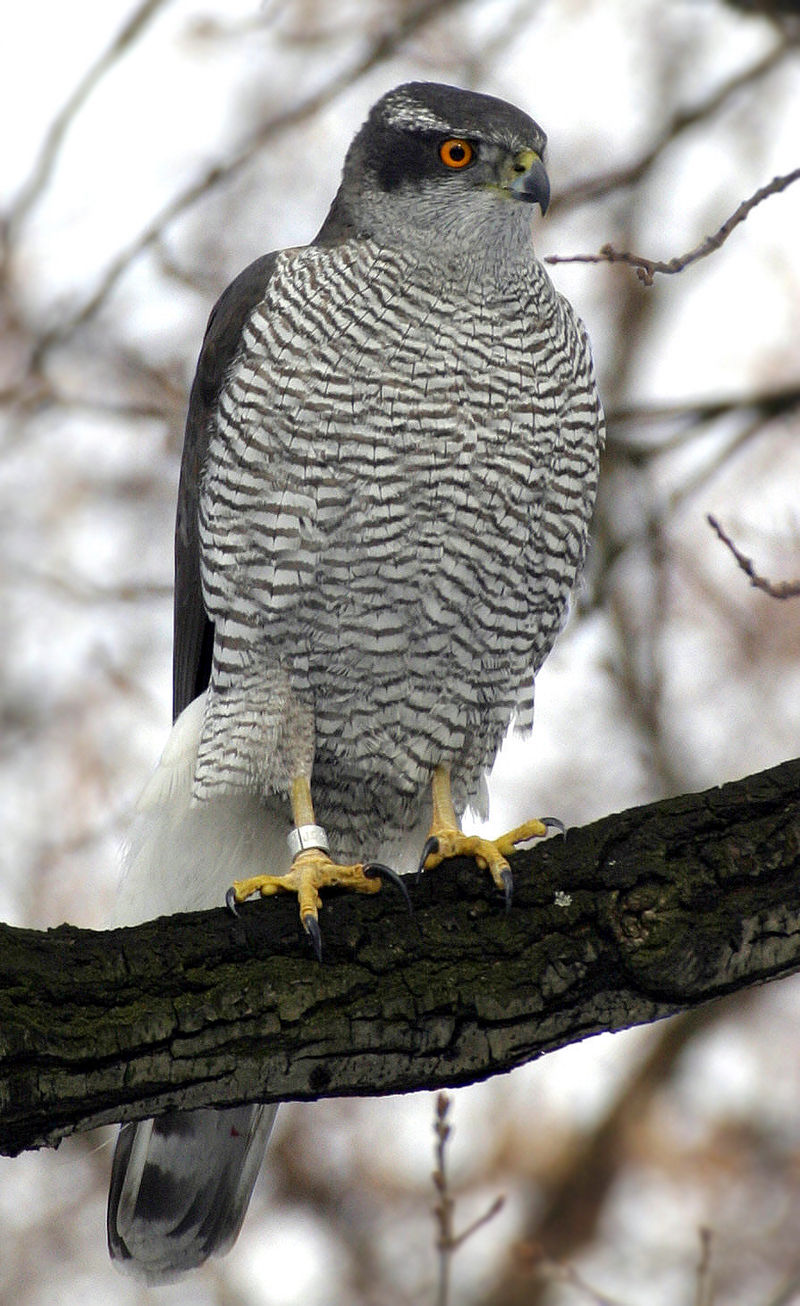
The Northern Goshawk is a medium-large bird of prey belonging to the Accipitridae family. It has been known as one of the true hawks, with “Accipiter” meaning hawk in Latin and “gentilis” referring to its noble characteristics.
They are found worldwide, most commonly in wooded areas such as forests or thickets where they hunt small birds and mammals.
The males have spotted grey upperparts while females tend to be fully brown above with some lighter barring on their underparts.
These raptors rely heavily on speed and agility when hunting from either perches or during aerial dives at high speeds for their prey which makes them formidable predators that can reach up to 40 mph.Scientific classification:
| Kingdom | Animalia |
| Phylum | Chordata |
| Class | Aves |
| Order | Accipitriformes |
| Family | Accipitridae |
| Genus | Accipiter |
| Species | A. gentilis |
33. Alpine Chough
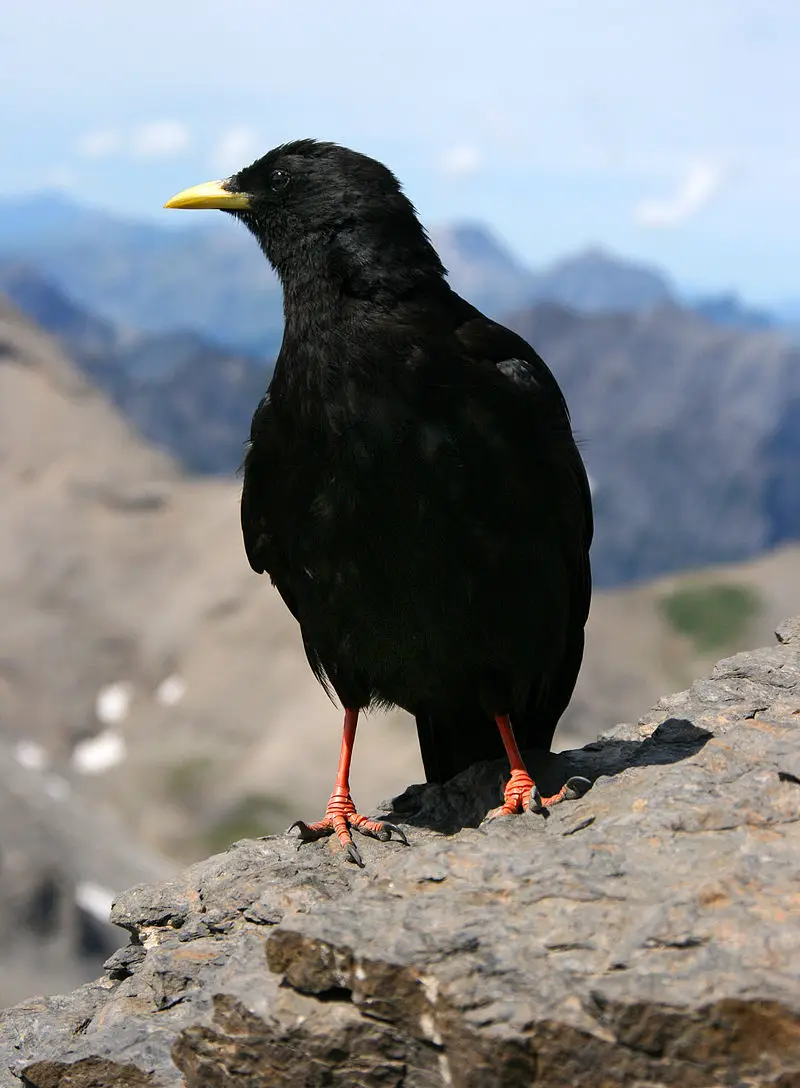
The Alpine chough is a bird in the crow family, distinguished by its yellow beak and black feathers. It has two subspecies that breed in high mountains of Spain, southern Europe and North Africa to Central Asia and Nepal.
This species can nest at incredible altitudes due to special adaptations such as their eggs having extra layers of membranes for protection against thin atmosphere on higher elevations.
The birds feed mainly on insects but have also been known to scavenge carrion or food left out by humans near their nesting sites.
They are agile fliers often seen gliding along cliffs with a characteristic “chack-chack” call which gives them their name.Scientific classification:
| Kingdom | Animalia |
| Phylum | Chordata |
| Class | Aves |
| Order | Passeriformes |
| Family | Corvidae |
| Genus | Pyrrhocorax |
| Species | P. graculus |
Also Featured In: Birds that Live in Montenegro, Most Common Birds of Corsica
34. Whiskered Tern
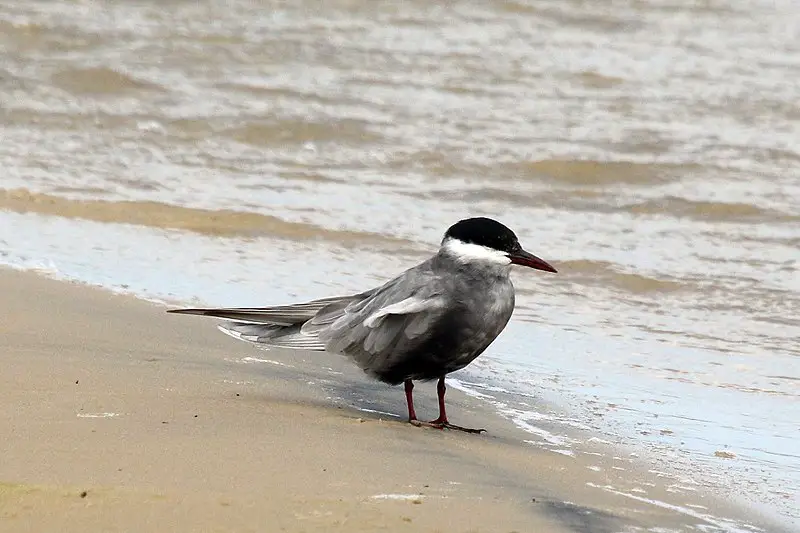
The whiskered tern (Chlidonias hybrida) is a small, graceful bird belonging to the family Laridae, which includes gulls, terns, and skimmers.
This bird is widely distributed across Europe, Asia, and Africa, where it breeds in colonies in freshwater marshes, ponds, and lakeshores.
The whiskered tern has a distinctive appearance, resembling a swallow, with a short, forked tail, black cap, and white cheeks.
One of the most distinctive features of the whiskered tern is its bill, which is strong and pointed. This adaptation allows it to catch insects and small fish, which make up the bulk of its diet.
During the breeding season, the whiskered tern’s bill and legs turn bright red, adding to its striking appearance.
The whiskered tern is a highly adaptable bird, and as such, it is found in various races across its range. For example, in Europe, it breeds mainly in western and southern countries, while in Asia, it breeds from the Middle East to the Russian Far East.
The whiskered tern is also a migrant bird, with populations wintering in sub-Saharan Africa, India, Southeast Asia, and Australia.
Breeding season for the whiskered tern is between May and August, and the birds form colonies with hundreds or thousands of individuals. They build their nests on floating vegetation or on the ground, and both sexes share incubation duties.
The chicks hatch after about three weeks, and the parents feed them insects and small fish until they are ready to fly after about three more weeks.
Although the whiskered tern is not considered threatened, its populations have declined in some areas, primarily due to habitat loss and degradation.
The destruction of wetlands, pollution, and changes in water levels and quality have all had an impact on the bird’s breeding and feeding grounds.Scientific classification:
| Kingdom | Animalia |
| Phylum | Chordata |
| Class | Aves |
| Order | Charadriiformes |
| Family | Laridae |
| Genus | Chlidonias |
| Species | C. hybrida |
Also Featured In: Common Serbian Birds, Common Birds in Kerala
35. Black-Necked Grebe

The Black-necked Grebe is a beautiful water bird belonging to the grebe family. It has an ochre coloured plumage with distinctive features which include extending behind its eyes and over its ear coverts.
The upper parts of this species are black, while their underparts and neck are white in colour.
During breeding season, males develop a dark grey crown on top of their head along with bright yellow facial stripes that run from the beak down to it’s chest area.
These birds feed mainly by diving underwater for insects, crustaceans, larvae, molluscs as well as small fish that they find in shallow waters or wetlands near freshwater lakes or streams.
They can often be spotted swimming alone but during winter months gather together creating large flocks due to mating activity taking place at these times.Scientific classification:
| Kingdom | Animalia |
| Phylum | Chordata |
| Class | Aves |
| Order | Podicipediformes |
| Family | Podicipedidae |
| Genus | Podiceps |
| Species | P. nigricollis |
Also Featured In: Birds Live in Tunisia, Most Common Lithuanian Birds
36. Short-Toed Treecreeper
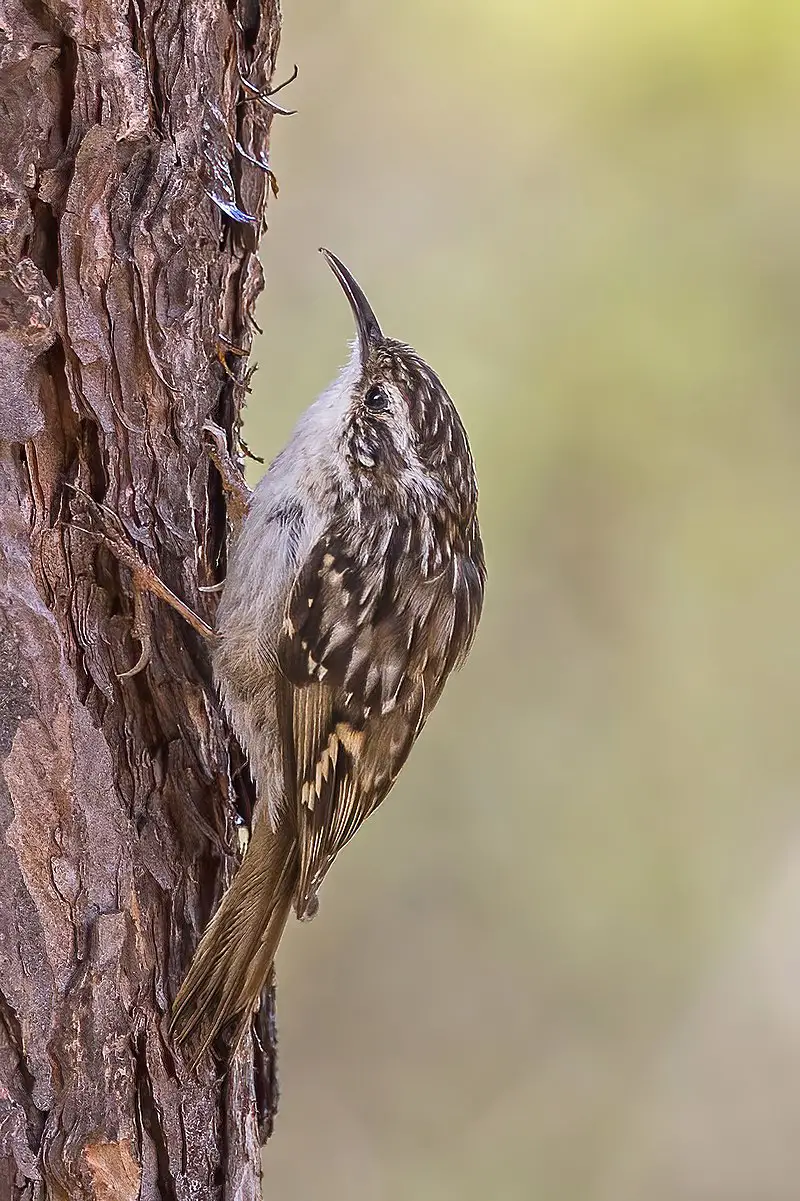
The Short-toed Treecreeper is a small passerine bird found in warmer regions of Europe and North Africa. It has distinctive brown, barred feathers with white underparts and an orange chest.
They are commonly seen climbing up trees searching for food such as insects, spiders, caterpillars, larvae and some seeds hidden beneath the bark. Their curved beak allows them to hunt effectively in crevices on tree trunks or branches where they can catch their prey more easily than other birds.
This species prefers deciduous forests over coniferous habitats due to the higher abundance of invertebrates that it feeds upon there.
Despite its relatively wide range across Europe and Northern Africa this species is threatened by expansion of urban areas which destroy vital habitat needed for their survival making conservation efforts essential if we are to protect these fascinating birds from extinction.Scientific classification:
| Kingdom | Animalia |
| Phylum | Chordata |
| Class | Aves |
| Order | Passeriformes |
| Family | Certhiidae |
| Genus | Certhia |
| Species | C. brachydactyla |
37. Eurasian Skylark
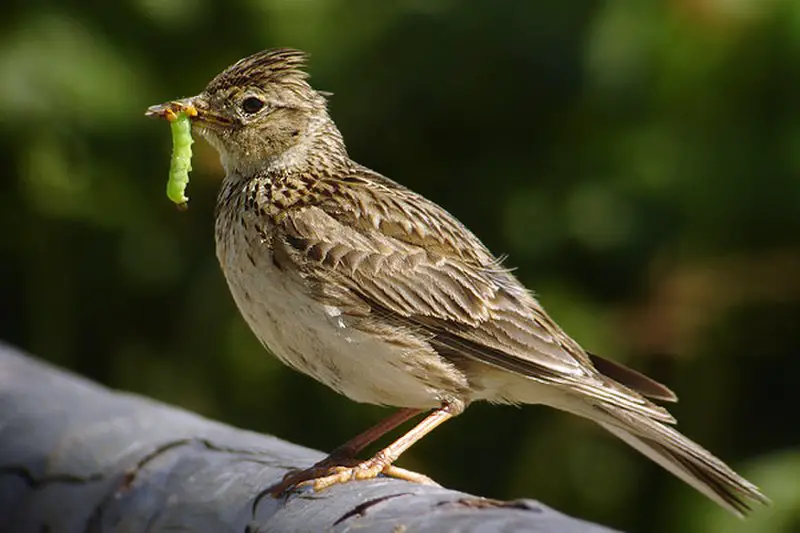
The Eurasian skylark is a medium-sized bird belonging to the lark family, Alaudidae. It inhabits open areas such as farmland and heathland across Europe and the Palearctic region.
The most notable characteristic of this species is its male’s song which is delivered in an impressive hovering flight from heights ranging between 50 – 100 metres (160 – 330 ft).
This beautiful bird has been introduced to New Zealand, Australia and Hawaii Islands too.
Its main diet consists of insects but it also feeds on seeds, grains and some vegetation during wintertime when food sources become scarce.
The males are known for their elaborate courtship display involving high flights with trills that can be heard up to 2 km away.Scientific classification:
| Kingdom | Animalia |
| Phylum | Chordata |
| Class | Aves |
| Order | Passeriformes |
| Family | Alaudidae |
| Genus | Alauda |
| Species | A. arvensis |
Also Featured In: Shetland Islands Birds You Should Know,
38. Rail
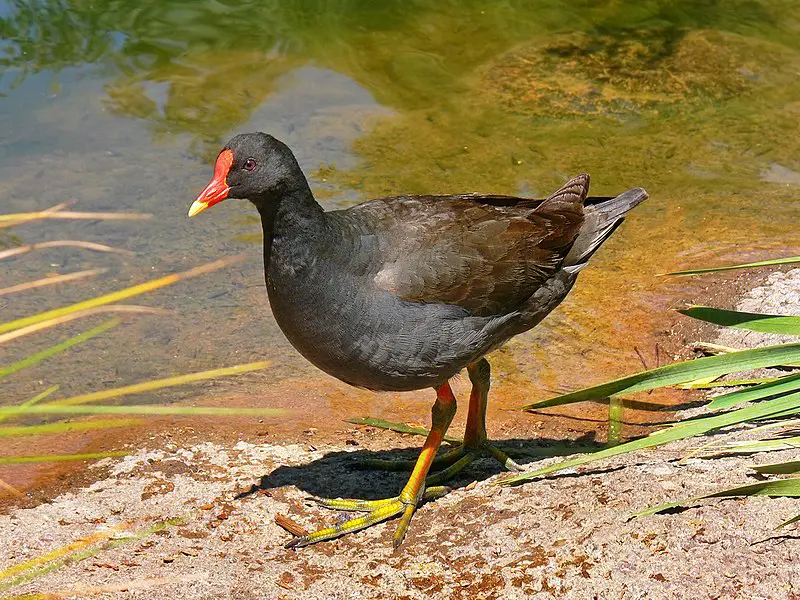
Rails are a diverse family of birds, ranging from small to medium size and living in habitats across the world.
They can be found around wetlands, as well as any other land-based environment except for dry deserts, polar regions or areas with persistent snow cover.
These ground-dwellers have short legs and long toes that help them maneuver through wetland vegetation easily.
Tey typically feed on insects and aquatic invertebrates but will also eat seeds and berries when available.
Species such as coots, crakes and gallinules have evolved different bill shapes to allow them to navigate their environments more efficiently while searching for food.
Rails live both alone or in pairs depending on the species; some migrate seasonally while others remain at one location year round.Scientific classification:
| Kingdom | Animalia |
| Phylum | Chordata |
| Class | Aves |
| Order | Gruiformes |
| Family | Rallidae Rafinesque, 1815 |
Also Featured In: Birds of Sweden, Common Denmark Birds
39. Procellariidae
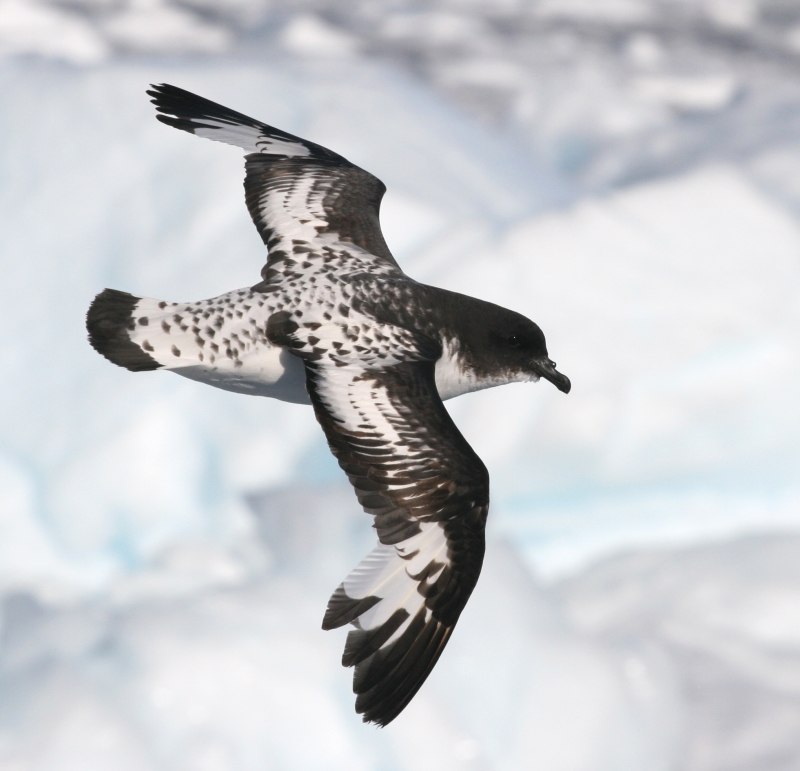
Procellariidae is a diverse family of seabirds belonging to the bird order Procellariiformes.
These birds are commonly referred to as tubenoses and include fulmarine petrels, gadfly petrels, diving petrels, prions, and shearwaters.
They range in size from the small storm-petrel which measures around 18cm long to the giant albatross which can reach up to 3 meters in length.
Generally found near oceans or coasts where they feed on fish as well as squid and other marine life depending on species.
Many procellariids will also nest inland during breeding season before returning back out at sea for most of their lives.
Their wings have specially adapted feathers that give them incredible gliding abilities allowing them literally fly with minimal effort over vast distances across oceanic regionsScientific classification:
| Kingdom | Animalia |
| Phylum | Chordata |
| Class | Aves |
| Order | Procellariiformes |
| Family | Procellariidae Leach, 1820 |
Also Featured In: Bulgarian Birds, Birds that Live in Croatia
40. Eurasian Nuthatch
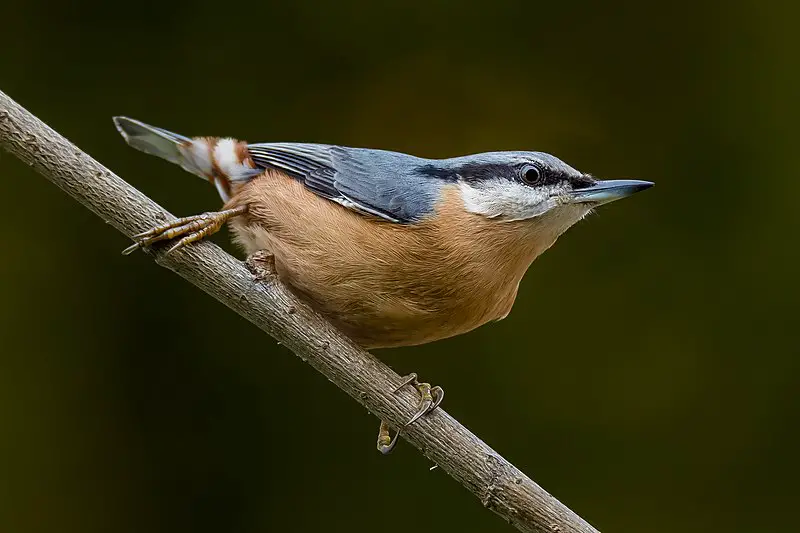
The Eurasian nuthatch is a small passerine bird found in the Palearctic region, most commonly in Europe. It has blue-gray upper parts, an orange-buff underbelly, and a black eye stripe.
The distinctive characteristic of this species is its loud dwip call which can be heard throughout its range.
This species has more than 20 subspecies divided into three main groups based on their geographical ranges.
Those from western regions having the buffest coloration while eastern birds are greyer overall.
They usually feed on insects and spiders but also eat nuts and seeds when available, often storing them for later use by wedging them into bark crevices or similar places to retrieve later as needed.Scientific classification:
| Kingdom | Animalia |
| Phylum | Chordata |
| Class | Aves |
| Order | Passeriformes |
| Family | Sittidae |
| Genus | Sitta |
| Species | S. europaea |
41. Stone-Curlew

Stone-curlews, also known as dikkops or thick-knees, are a family of birds that have adapted to live in tropical and temperate regions throughout the world.
They can be found in Africa, Asia and Australia with two or more species per region. Despite being classified as waders, most prefer dry arid habitats over moist wetlands.
Stone-curlews typically have long legs which help them navigate through their preferred terrain efficiently; some species even stand at an impressive height when standing on those long legs.
Additionally they feature cryptic plumage which helps them blend into their surroundings while hunting for prey such as insects and small mammals like rodents.
These unique bird’s calls are easily recognizable; it has been said that hearing one is similar to listening to someone whistling ‘Keee Weee’.Scientific classification:
| Kingdom | Animalia |
| Phylum | Chordata |
| Class | Aves |
| Order | Charadriiformes |
| Suborder | Chionidi |
| Family | Burhinidae Mathews, 1912 |
42. Threskiornithidae
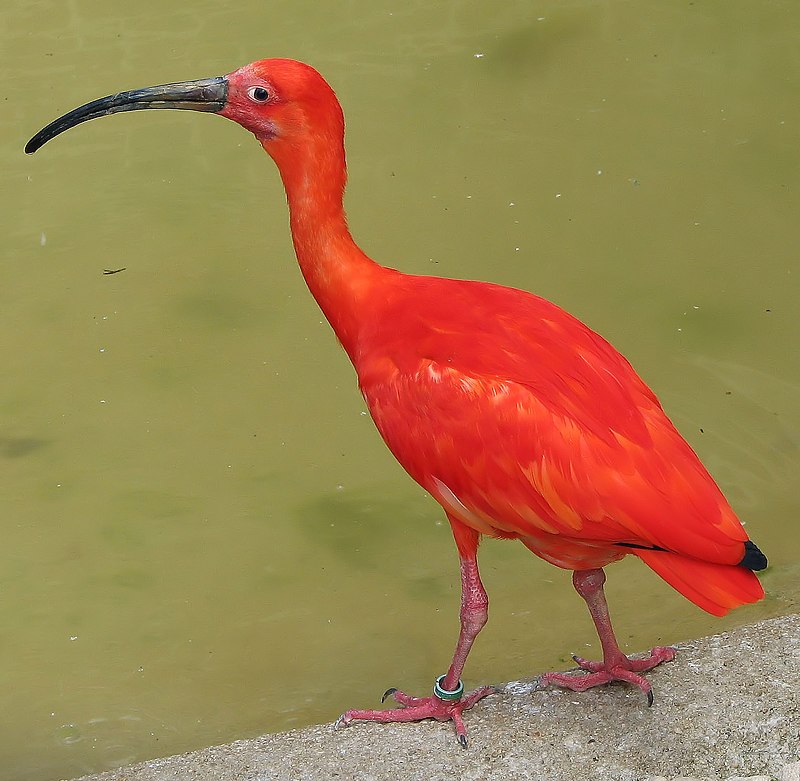
Threskiornithidae is a family of large wading birds which includes 36 species. These birds are traditionally divided into two subfamilies – the ibises and the spoonbills.
However, recent genetic analysis has shown that spoonbills actually belong to Old World ibis group, while New World ibises form an early offshoot from this lineage.
Threskiornithidse members have long curved beaks with serrated edges used for catching fish in shallow water or mudflats, as well as other aquatic invertebrates like crustaceans and mollusks.
They also feed on plant matter such as grains and seeds found close to wetlands areas where they live.
This diverse diet makes them important scavengers in their ecosystems, helping maintain healthy populations of native wildlife by controlling insect numbers and dispersing energy-rich seeds throughout wetland habitats.Scientific classification:
| Kingdom | Animalia |
| Phylum | Chordata |
| Class | Aves |
| Order | Pelecaniformes |
| Suborder | Ardei |
| Family | Threskiornithidae Richmond, 1917 |
Also Featured In: Common Uzbekistan Birds, Native Birds of Kazakhstan
43. True Owl
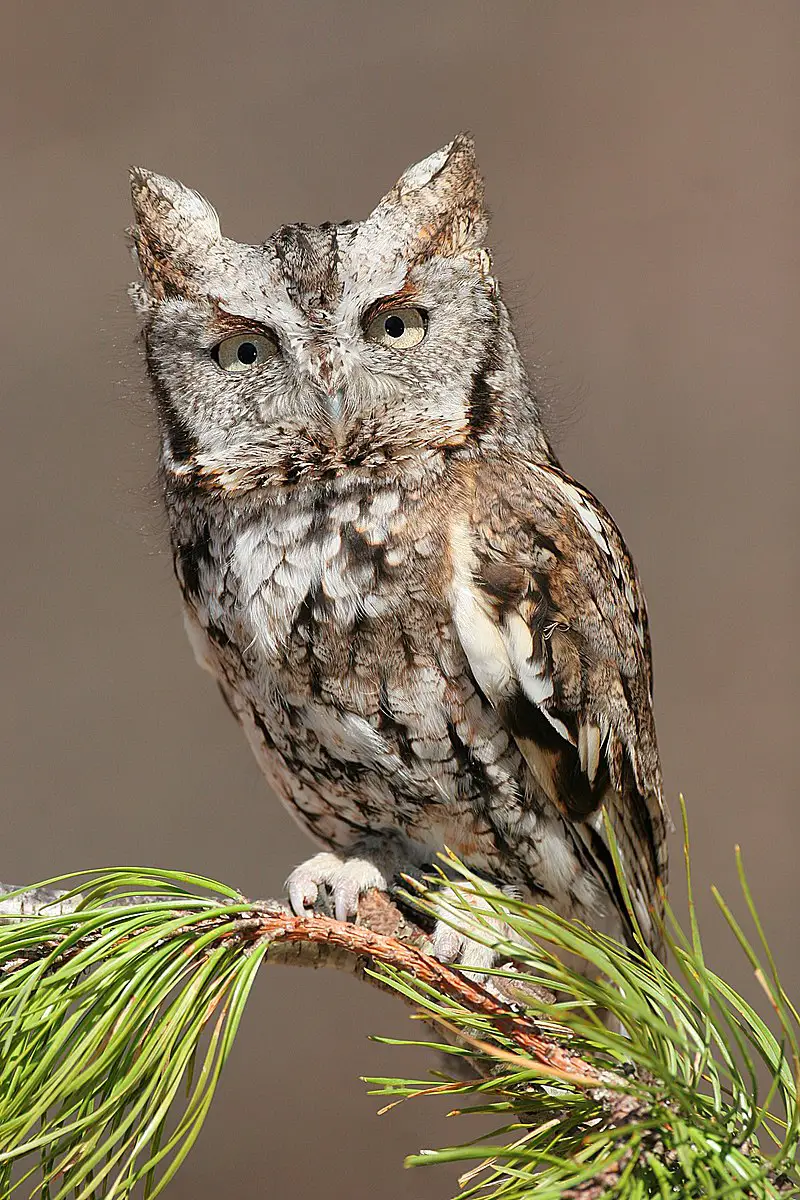
Owls are one of the two main families of owls, with Strigidae being the true owl family. With 230 species and 24 genera, this large bird family is found all around the world except for Antarctica.
Owls vary greatly in size and shape, but they typically have a round face with forward-facing eyes and a hooked bill to help them catch their prey.
They also possess asymmetrical ears that allow them to detect even faint sounds from great distances making them formidable predators at night.
Although solitary by nature, some species can be quite vocal while others may remain silent during daylight hours until sunset when they become active again looking for food under cover of darkness.Scientific classification:
| Kingdom | Animalia |
| Phylum | Chordata |
| Class | Aves |
| Order | Strigiformes |
| Family | Strigidae Leach, 1820 |
44. Egyptian Vulture
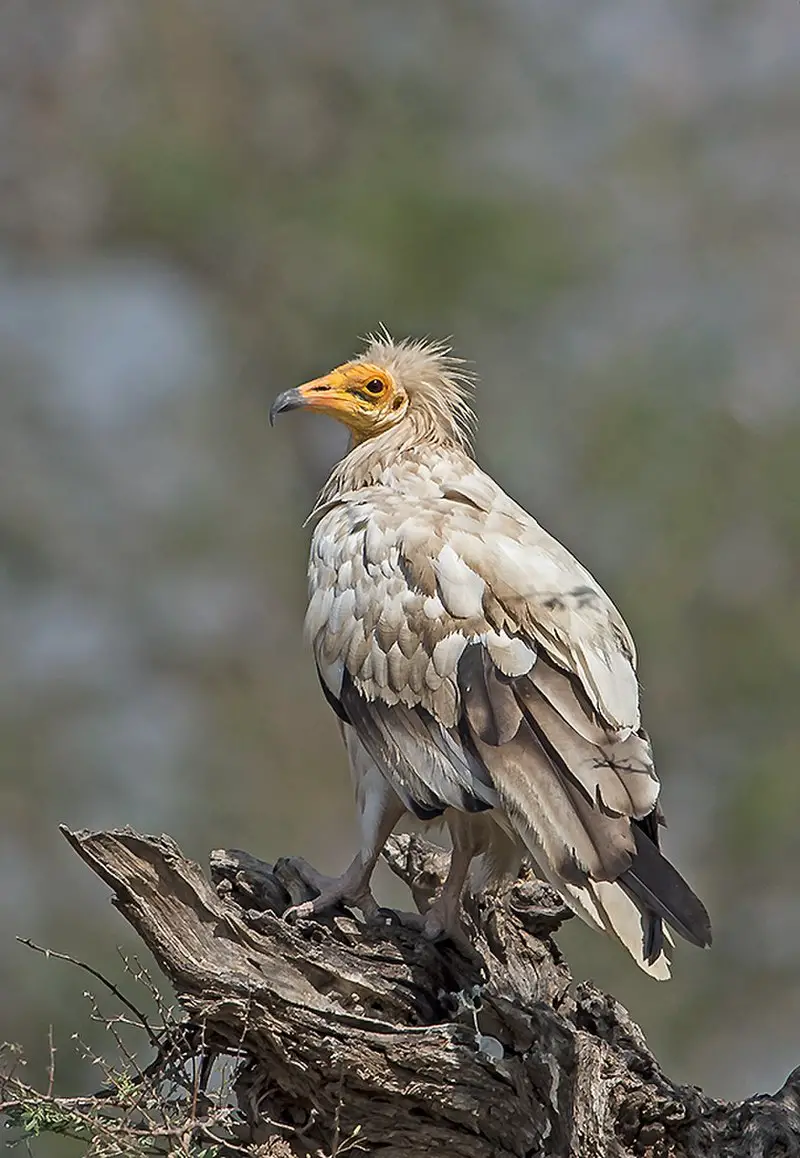
The Egyptian Vulture is a small Old World vulture known for its distinctive wedge-shaped tail and contrasting underwing pattern.
It has been found from the Iberian Peninsula through North Africa to India, making it one of the most widespread birds in that area.
This species eats mostly carrion but will also feed on eggs and small prey if they can find them. Its diet consists mainly of lizards, insects and other invertebrates as well as fruit like figs, grapes or mulberries when available.
The Egyptian Vulture plays an important role in ecosystems by helping to clean up carcasses which could otherwise spread disease or attract predators such as jackals into human settlements.
They are considered vulnerable due to threats including habitat destruction, electrocution from power lines and accidental poisoning – all factors contributing towards their decline in numbers across their rangeScientific classification:
| Kingdom | Animalia |
| Phylum | Chordata |
| Class | Aves |
| Order | Accipitriformes |
| Family | Accipitridae |
| Genus | Neophron Savigny, 1809 |
| Species | N. percnopterus |
45. Black-Headed Gull
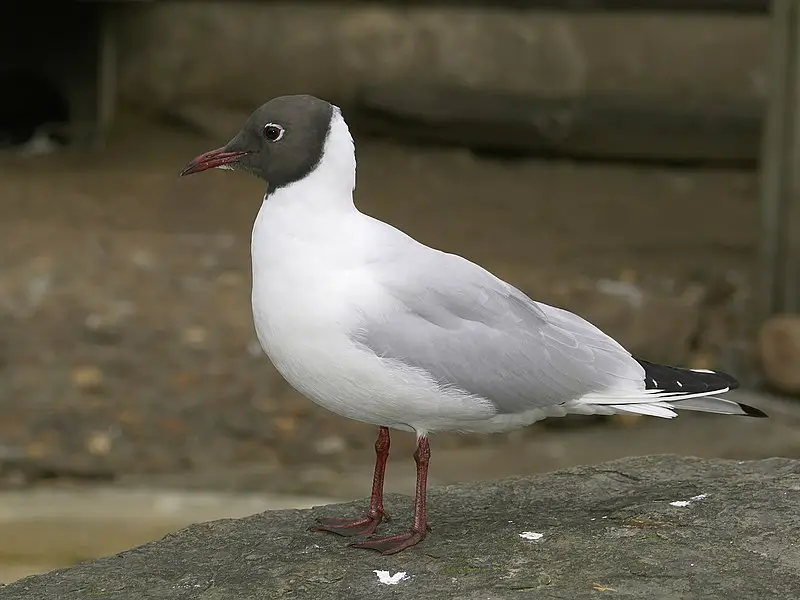
The Black-headed Gull is a small, migratory bird found in much of the Palearctic. It breeds mainly in Europe and coastal eastern Canada but can also be found further west in milder areas.
In North America it’s known as the Common Black-headed Gull.
Its plumage consists of grey on top with white underneath, while its head has a distinctive black cap during breeding season which fades to brown outside of this period.
They are often seen by coastlines or near inland waters where they feed off fish, insects and crustaceans caught either from the surface or underwater depending on their preference at that time.Scientific classification:
| Kingdom | Animalia |
| Phylum | Chordata |
| Class | Aves |
| Order | Charadriiformes |
| Family | Laridae |
| Genus | Chroicocephalus |
| Species | C. ridibundus |
46. Mute Swan
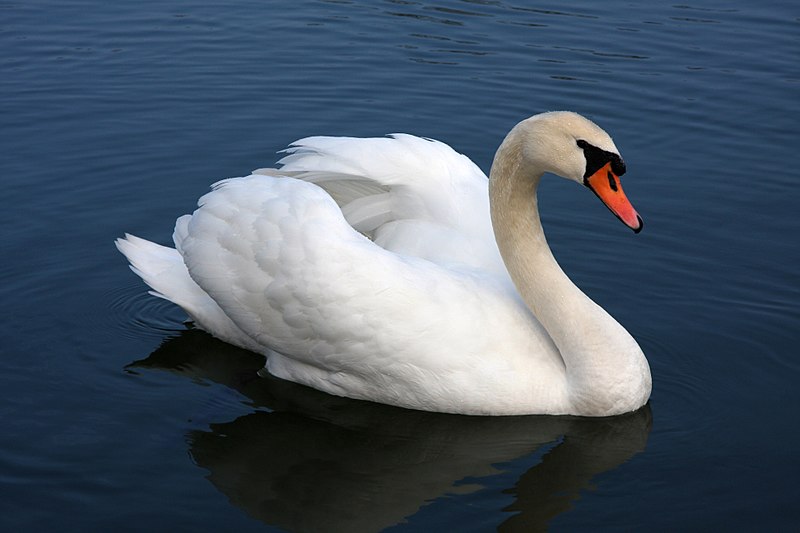
The Mute Swan is a species of swan belonging to the waterfowl family Anatidae. It can be found in much of Eurosiberia, as well as North America, Australasia and southern Africa where it has been introduced.
The ‘mute’ part of its name comes from its soft call which is more muffled than that of other swans.
They have an almost entirely white plumage with black legs and feet and an orange bill with a distinctive knob at the base.
These striking birds are large in size reaching up to 1 metre tall when fully grown with wingspans reaching 3 metres or more.
In flight they hold their necks arched gracefully above their body while beating powerful wings slowly through the air – creating quite a spectacle.Scientific classification:
| Kingdom | Animalia |
| Phylum | Chordata |
| Class | Aves |
| Order | Anseriformes |
| Family | Anatidae |
| Genus | Cygnus |
| Species | C. olor |
Also Featured In: Tundra Birds, Large Birds of Michigan
47. Eurasian Hoopoe
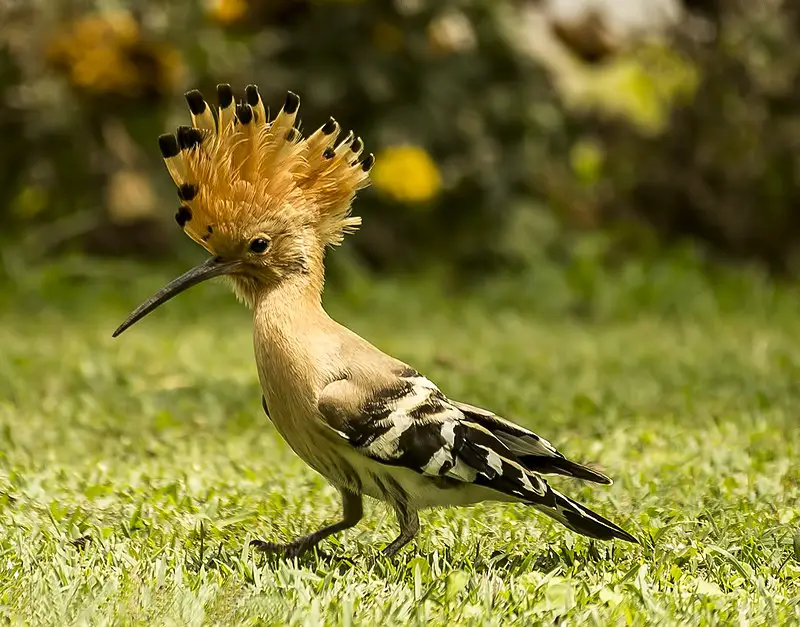
The Eurasian hoopoe is a unique and stunning bird. Its cinnamon-coloured body contrasts sharply with its black-and-white wings, while the tall erectile crest gives it an even more distinctive appearance.
It also has a broad white band across its black tail and a long narrow downcurved beak. When you hear this species of birds call, it’s typically “oop-oop-oop”, very soft yet unmistakable in tone.
This beautiful creature can be found throughout Europe, Asia and northern Africa where they mainly migrate for cooler climates during winter months.
The Eurasian hoopoe is truly one of nature’s most majestic creations – from their vibrant plumage to their mellow calls – making them unforgettable creatures that will never cease to amaze us all.Scientific classification:
| Kingdom | Animalia |
| Phylum | Chordata |
| Class | Aves |
| Order | Bucerotiformes |
| Family | Upupidae |
| Genus | Upupa |
| Species | U. epops |
48. Mallard
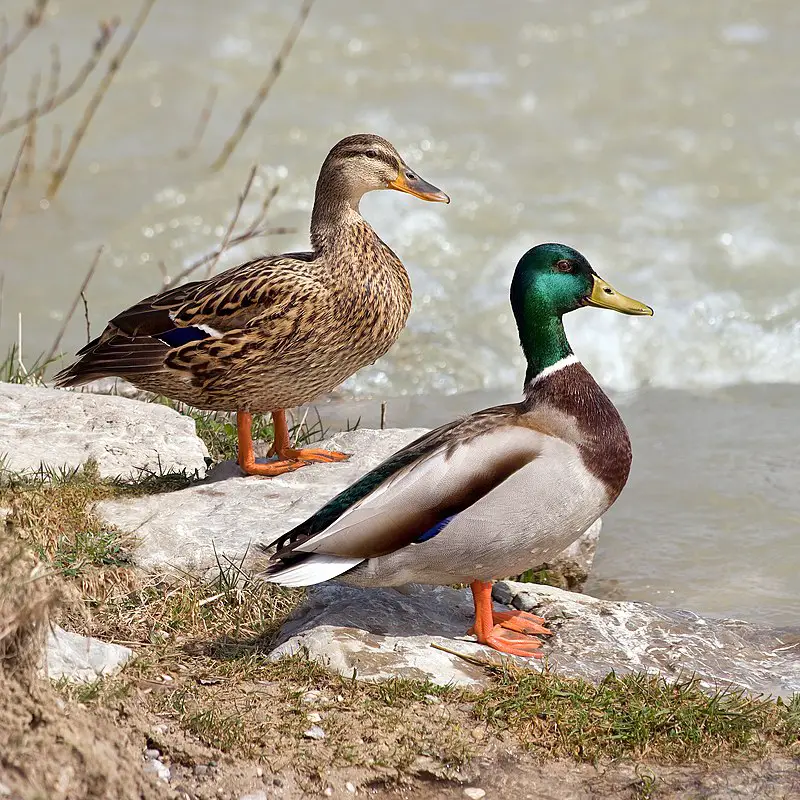
The Mallard is a species of dabbling duck that can be found living in temperate and subtropical regions across the Americas, Eurasia and North Africa.
It has been introduced to other areas such as New Zealand, Australia, Peru, Brazil and South Africa by humans.
This beautiful bird belongs to the Anatinae subfamily of waterfowl family Anatidae. The adult mallards have a glossy green head with white neck ring surrounding.
It along with brownish grey body feathers making them look stunning when they fly away or just sitting in their natural habitat around lakes or ponds.
They are excellent swimmers too due to webbed feet which helps them swim fast underwater while looking for food like aquatic insects etc.. Their loud quacking sound makes them quite popular among nature lovers.Scientific classification:
| Kingdom | Animalia |
| Phylum | Chordata |
| Class | Aves |
| Order | Anseriformes |
| Family | Anatidae |
| Genus | Anas |
| Species | A. platyrhynchos |
Conclusion
France is home to a diverse array of avian species, with 48 common birds gracing its skies and landscapes.
From the iconic European Robin to the elegant Eurasian Magpie, these birds enrich the country’s natural heritage and contribute to its ecological balance.
As indicators of environmental health, their presence reflects the quality and diversity of habitats across France, from urban parks to rural forests.
Conservation efforts focused on preserving these habitats, mitigating threats such as habitat loss and pollution, and promoting sustainable practices are crucial to ensure the continued flourishing of France’s avian populations.
By valuing and protecting these feathered inhabitants, we can uphold France’s biodiversity for future generations to enjoy.